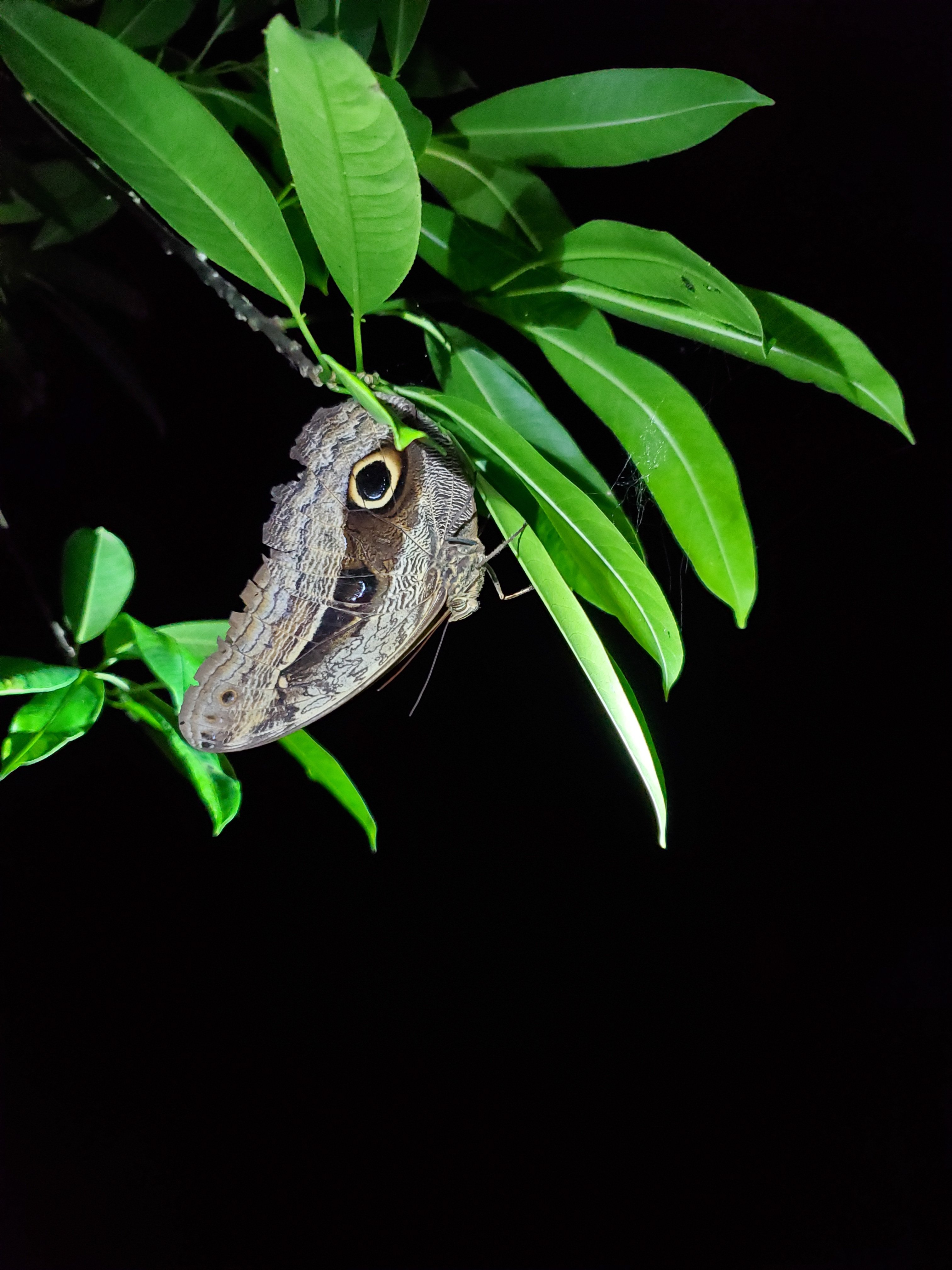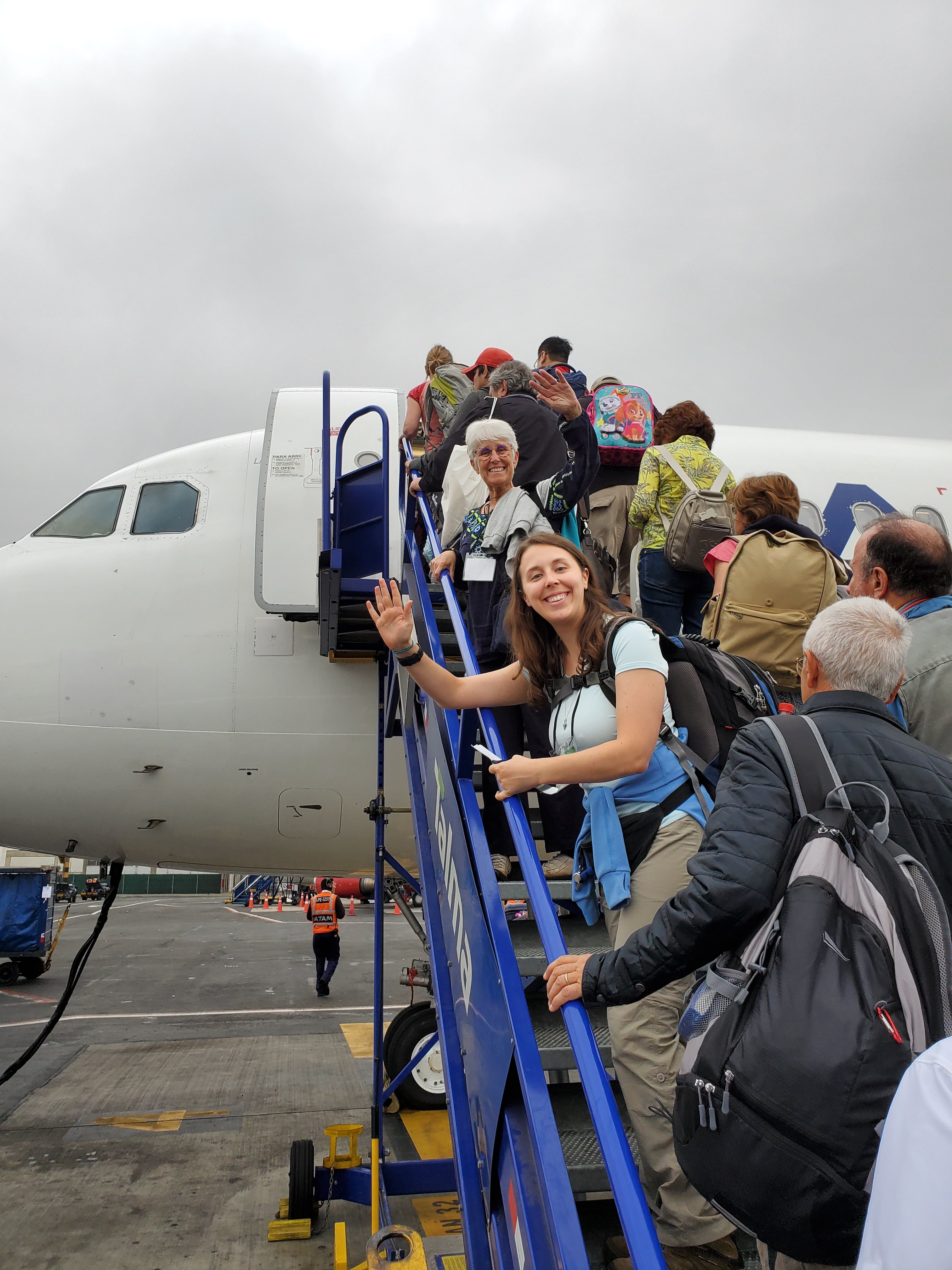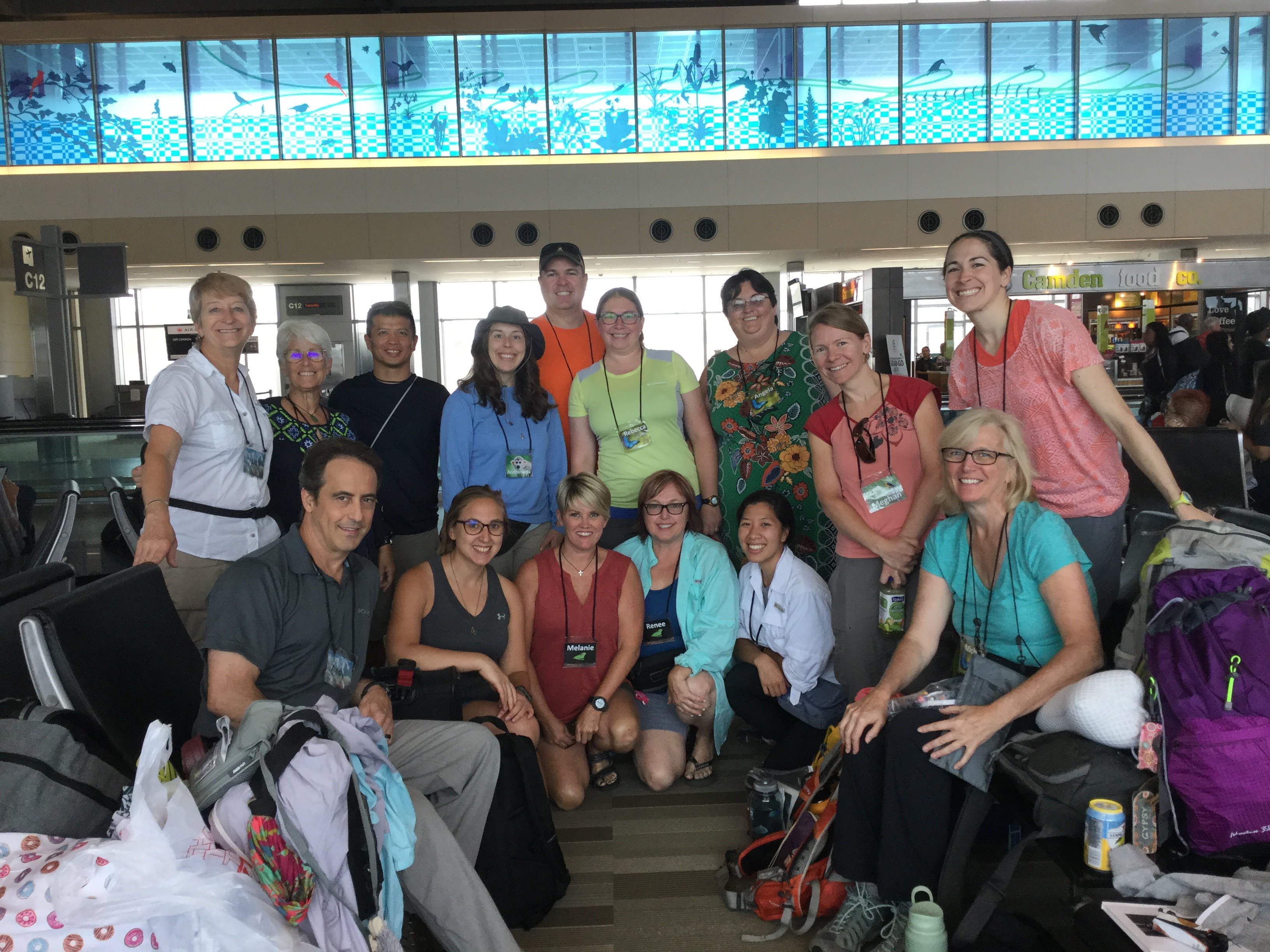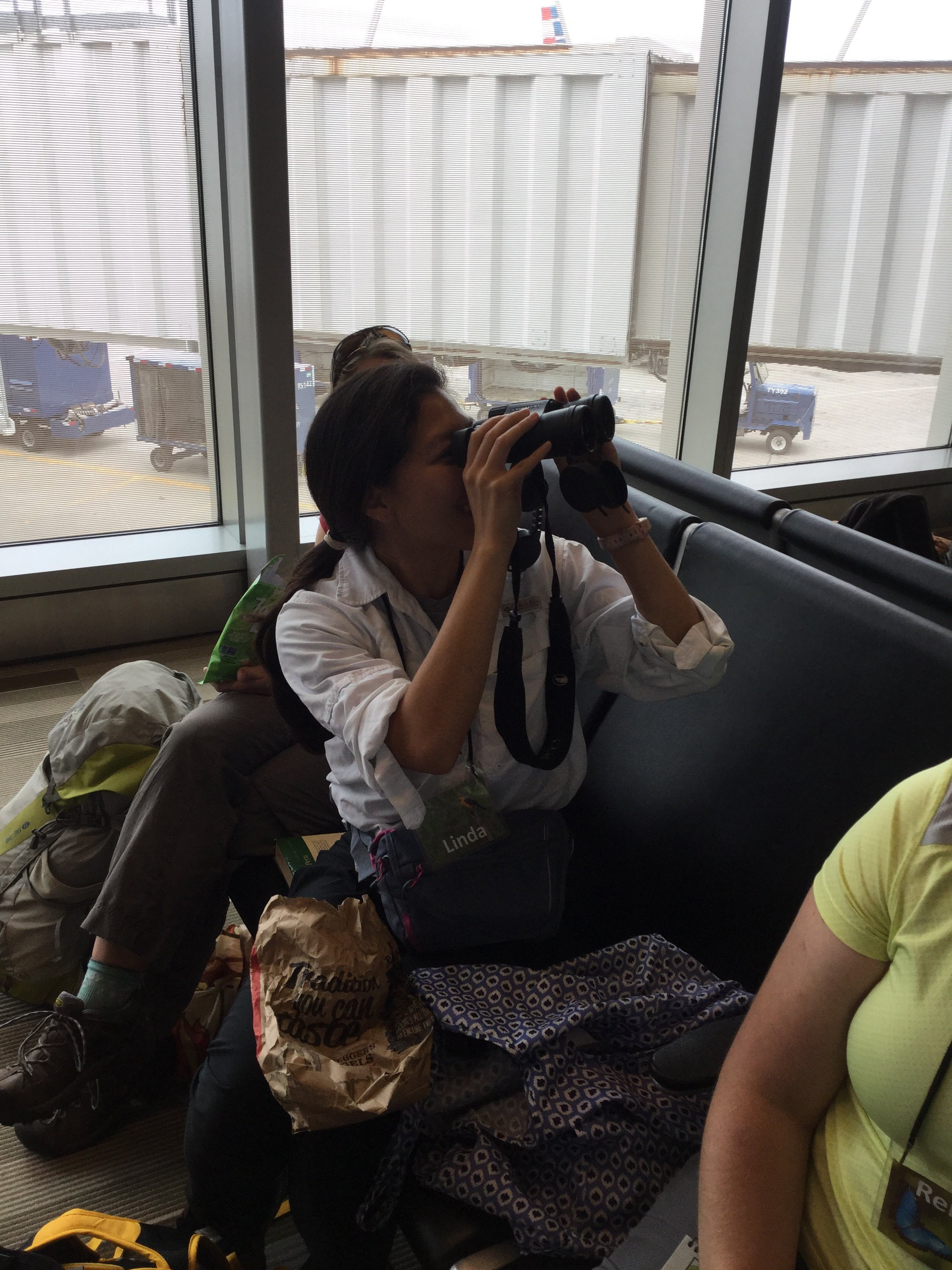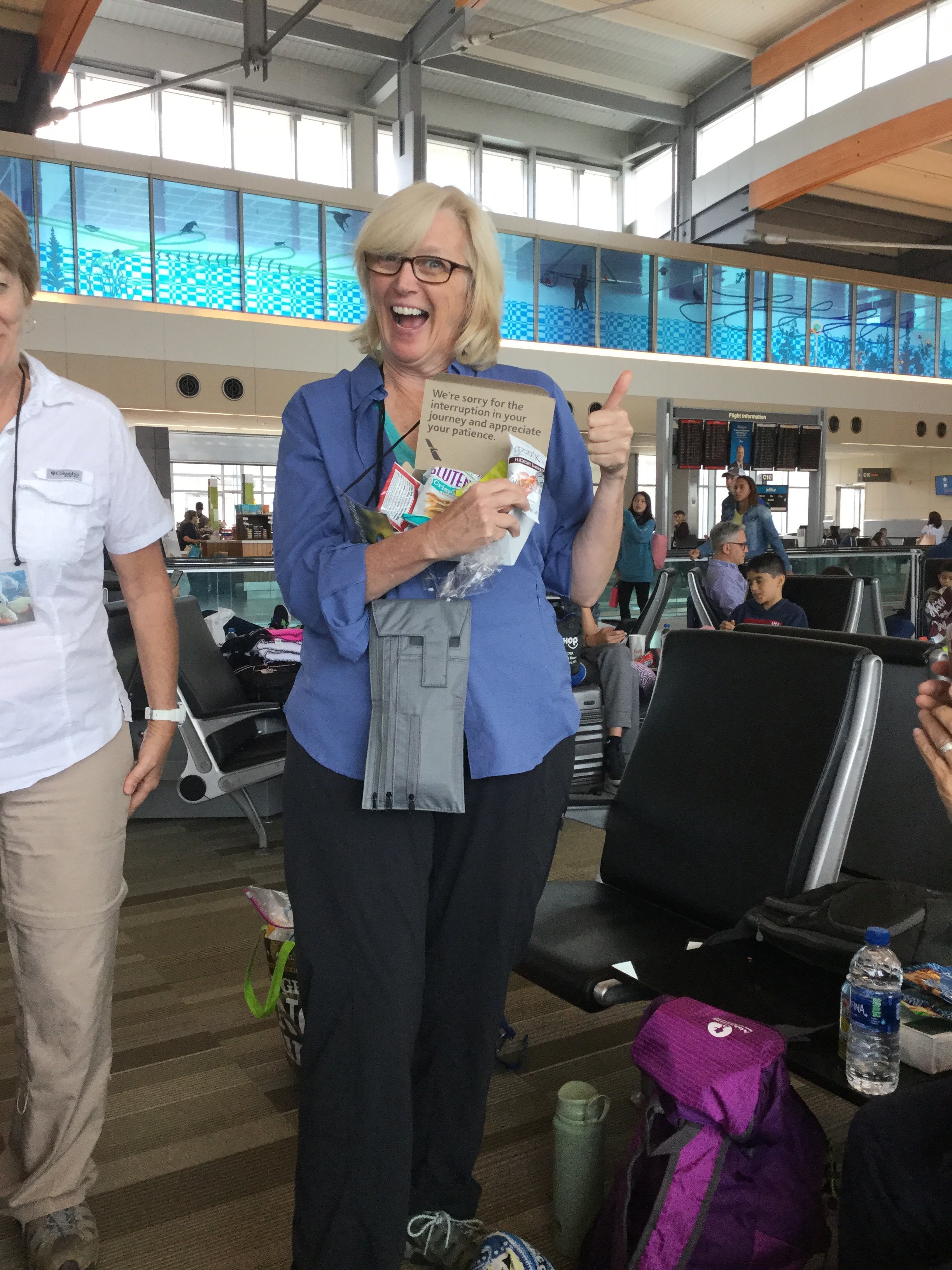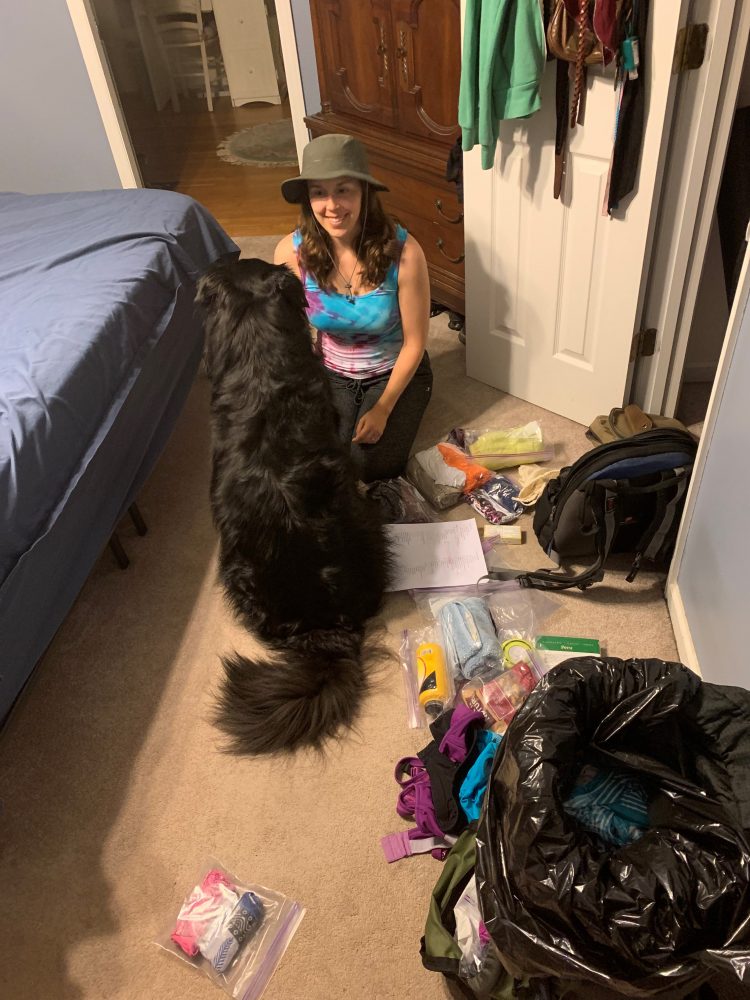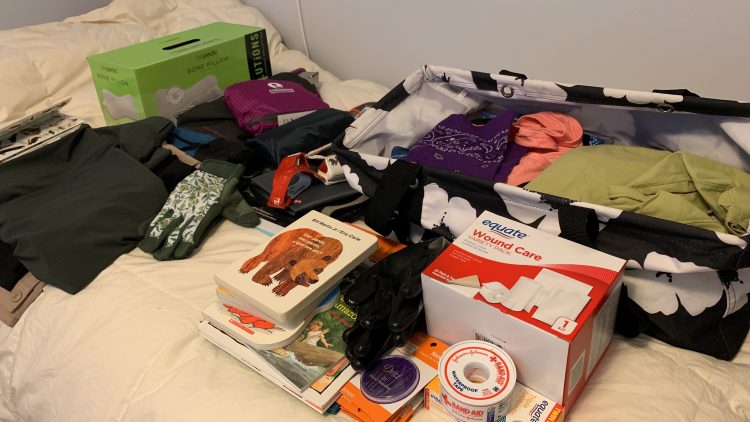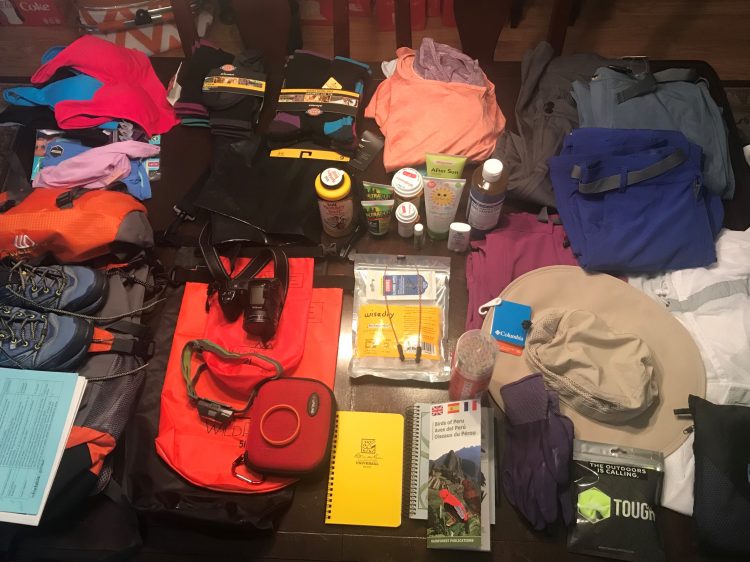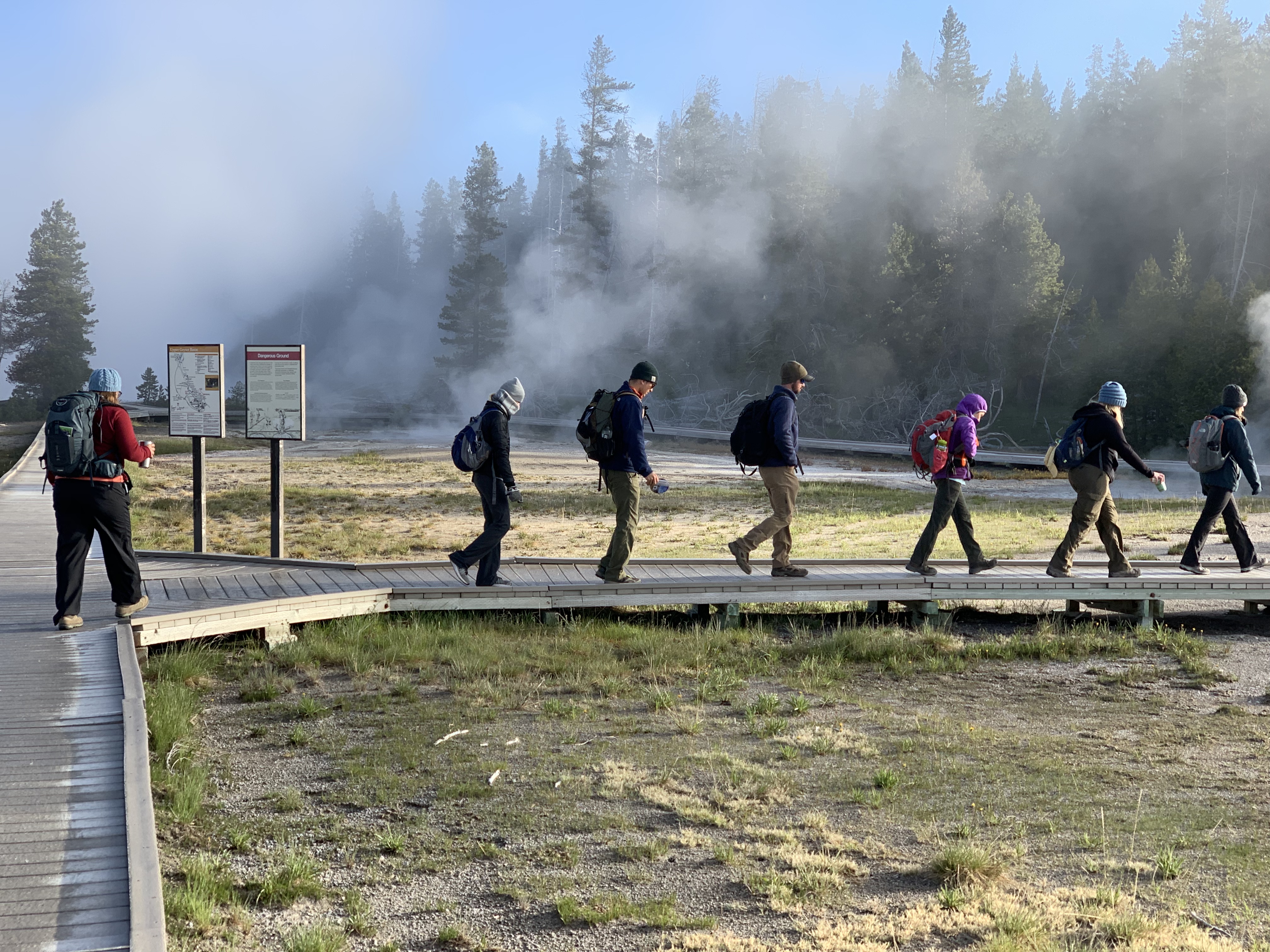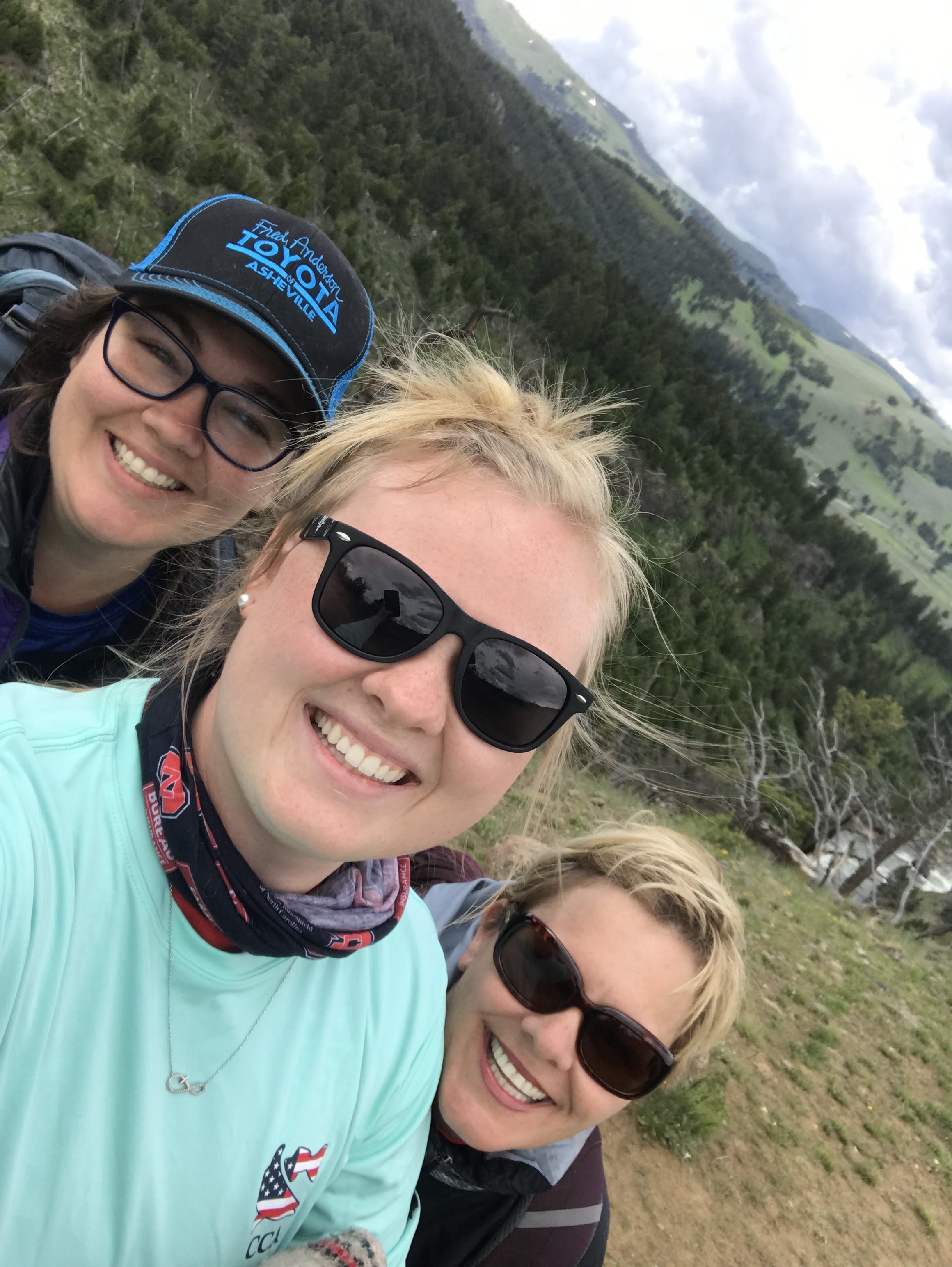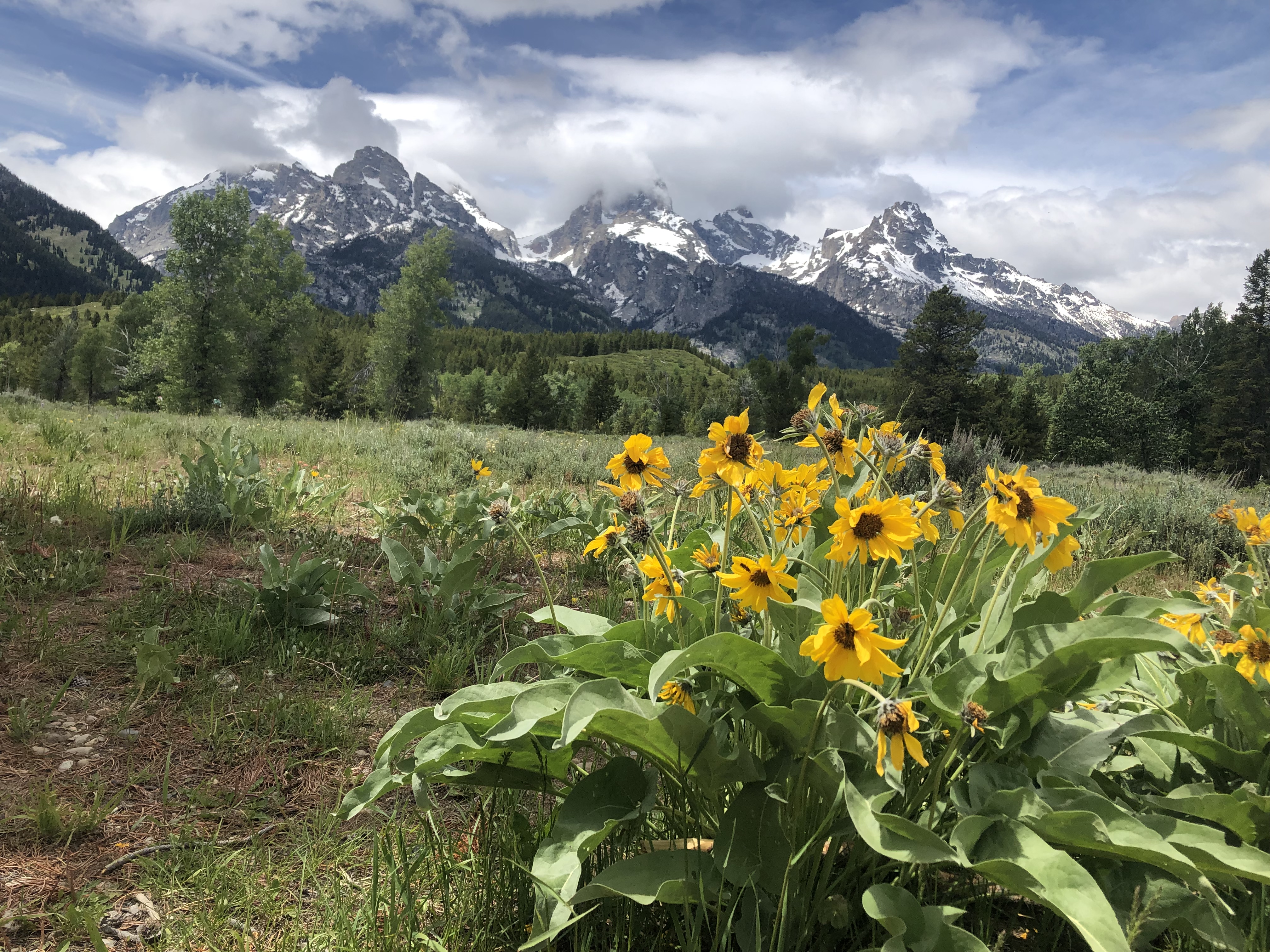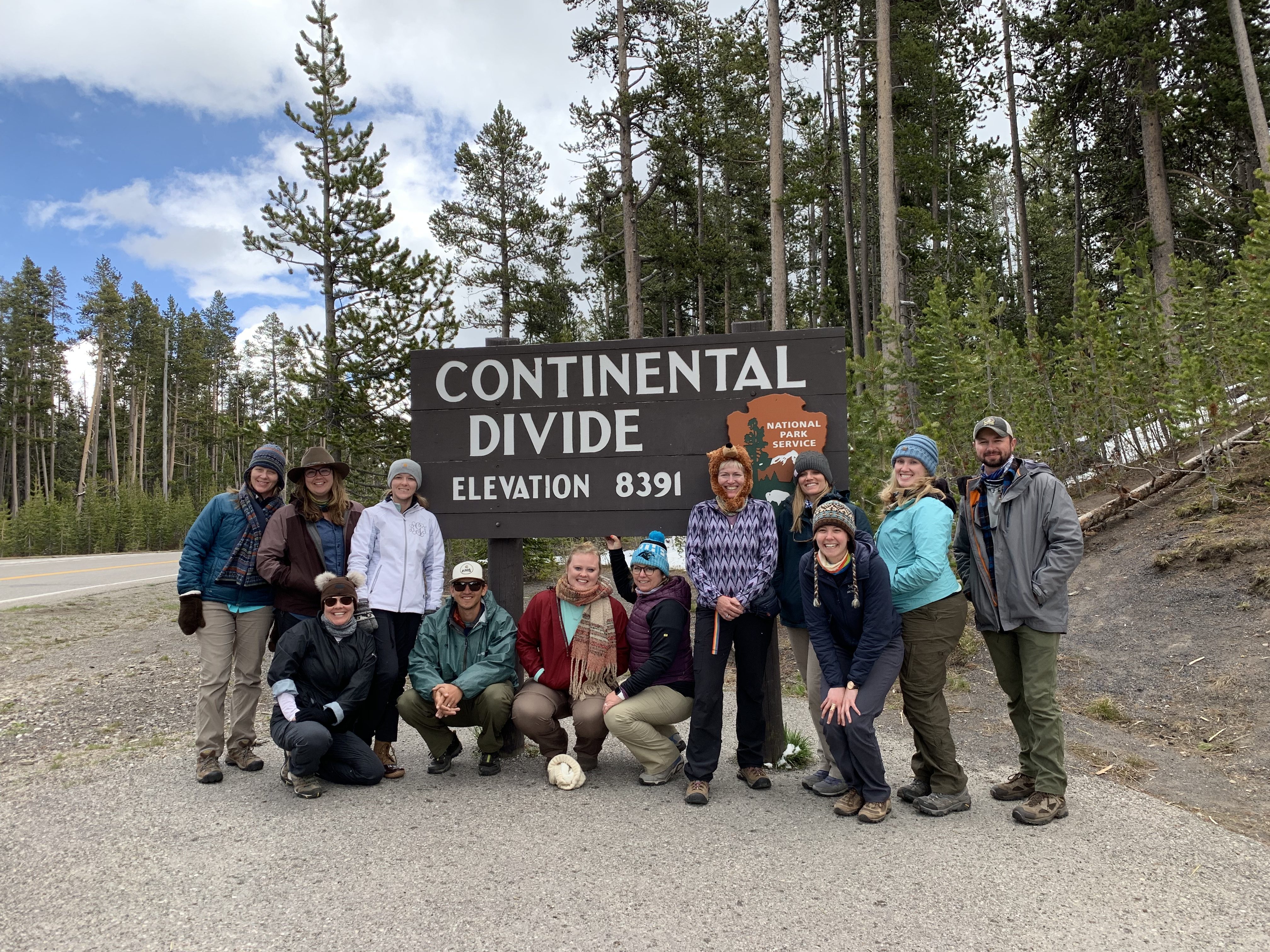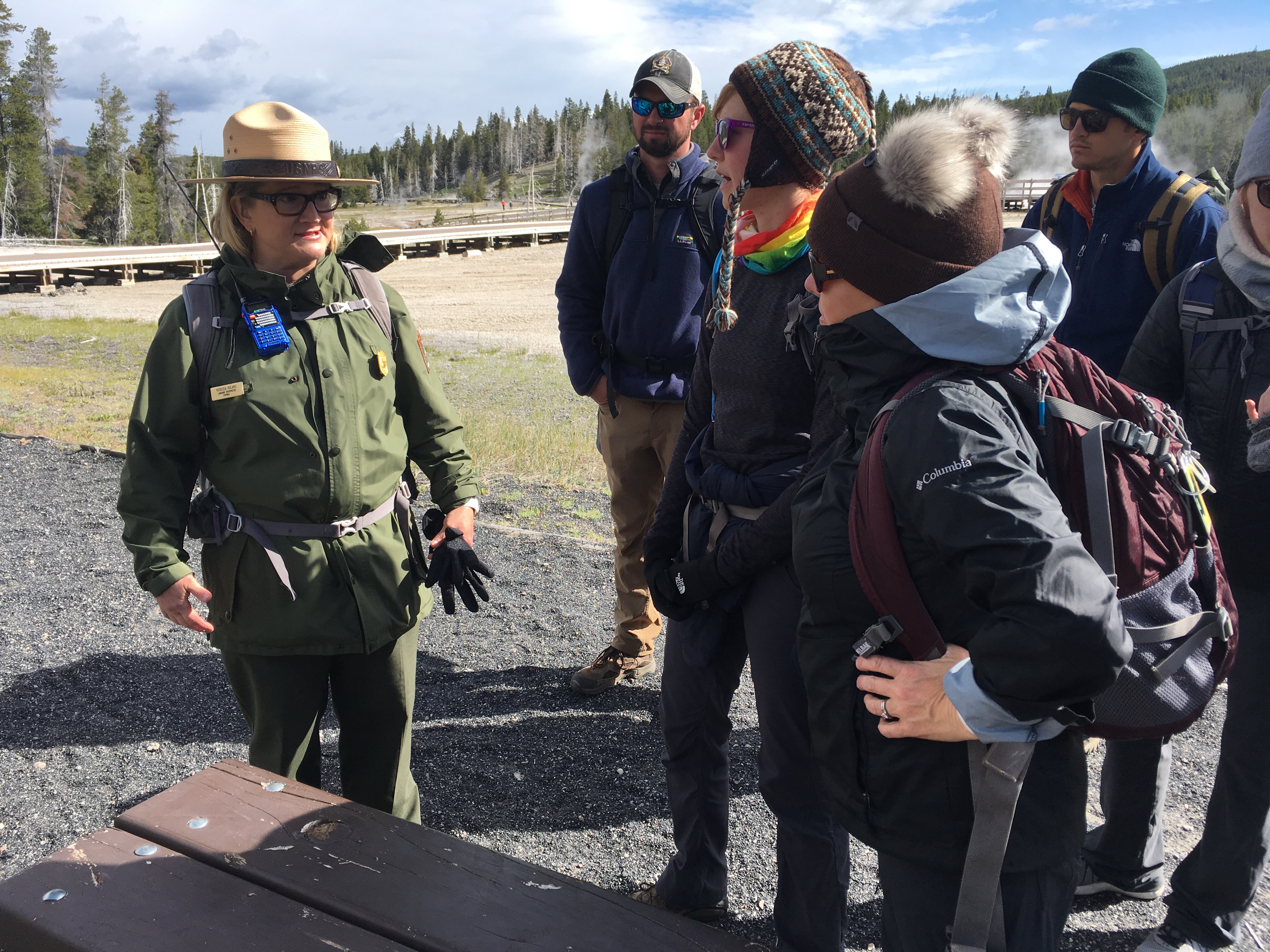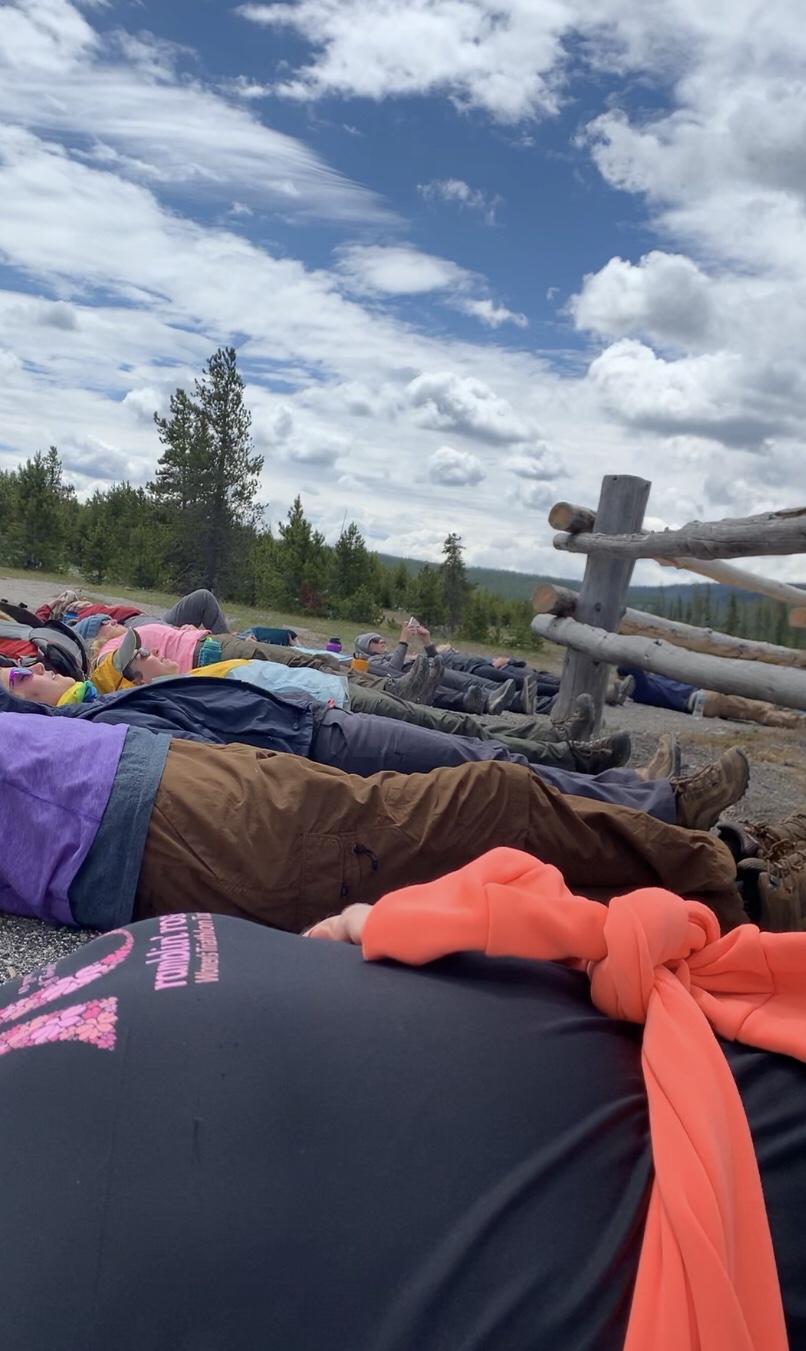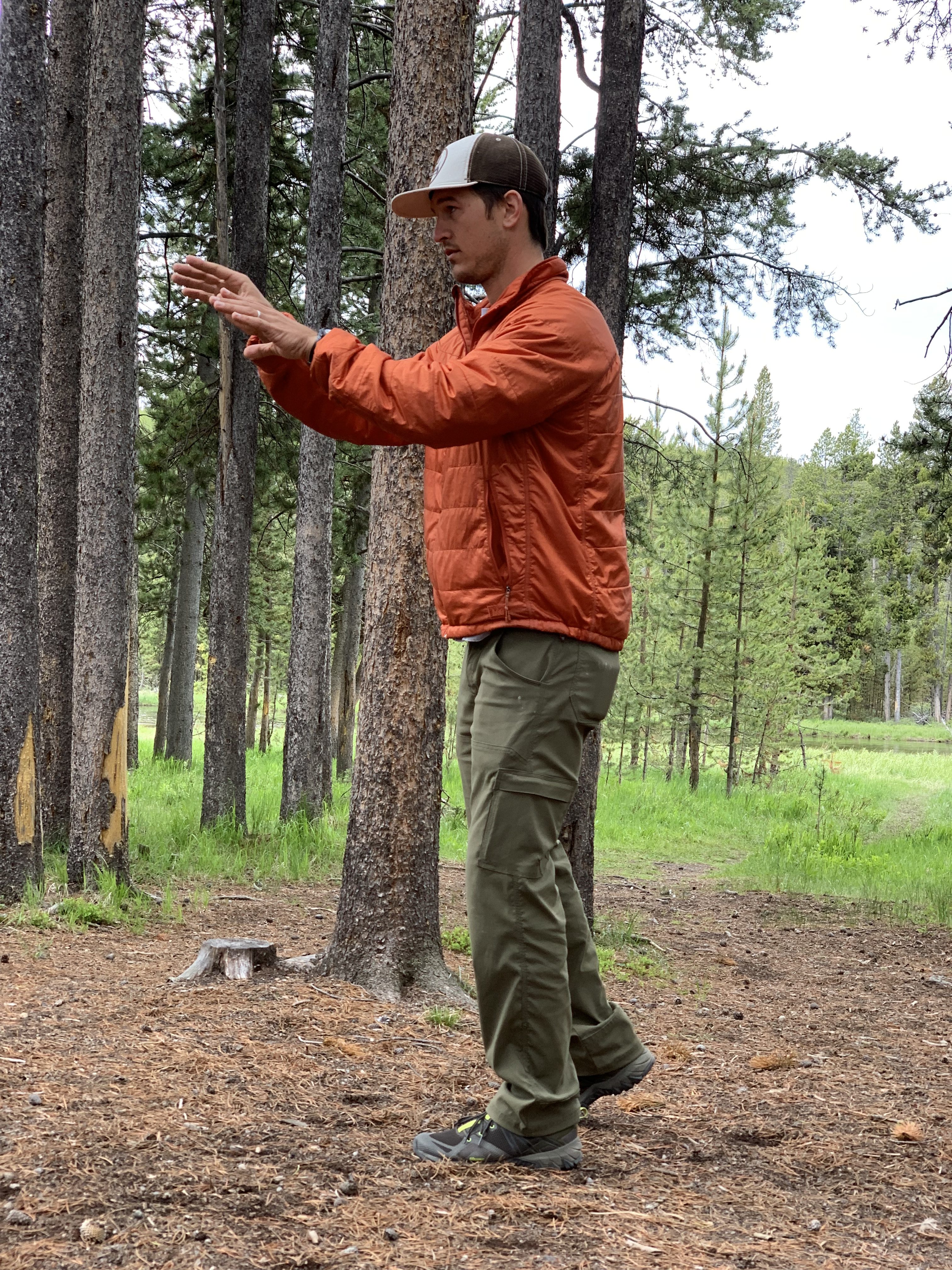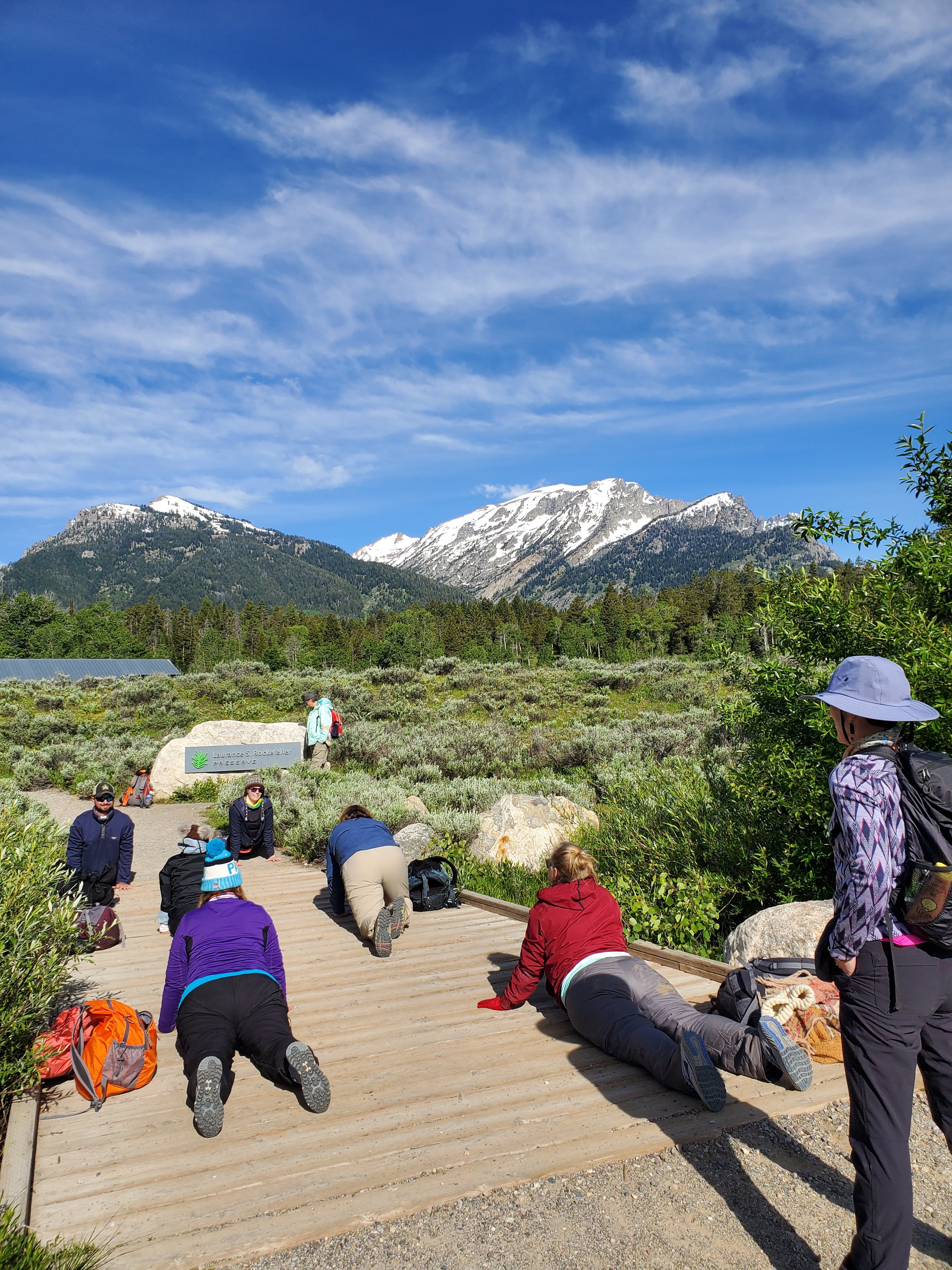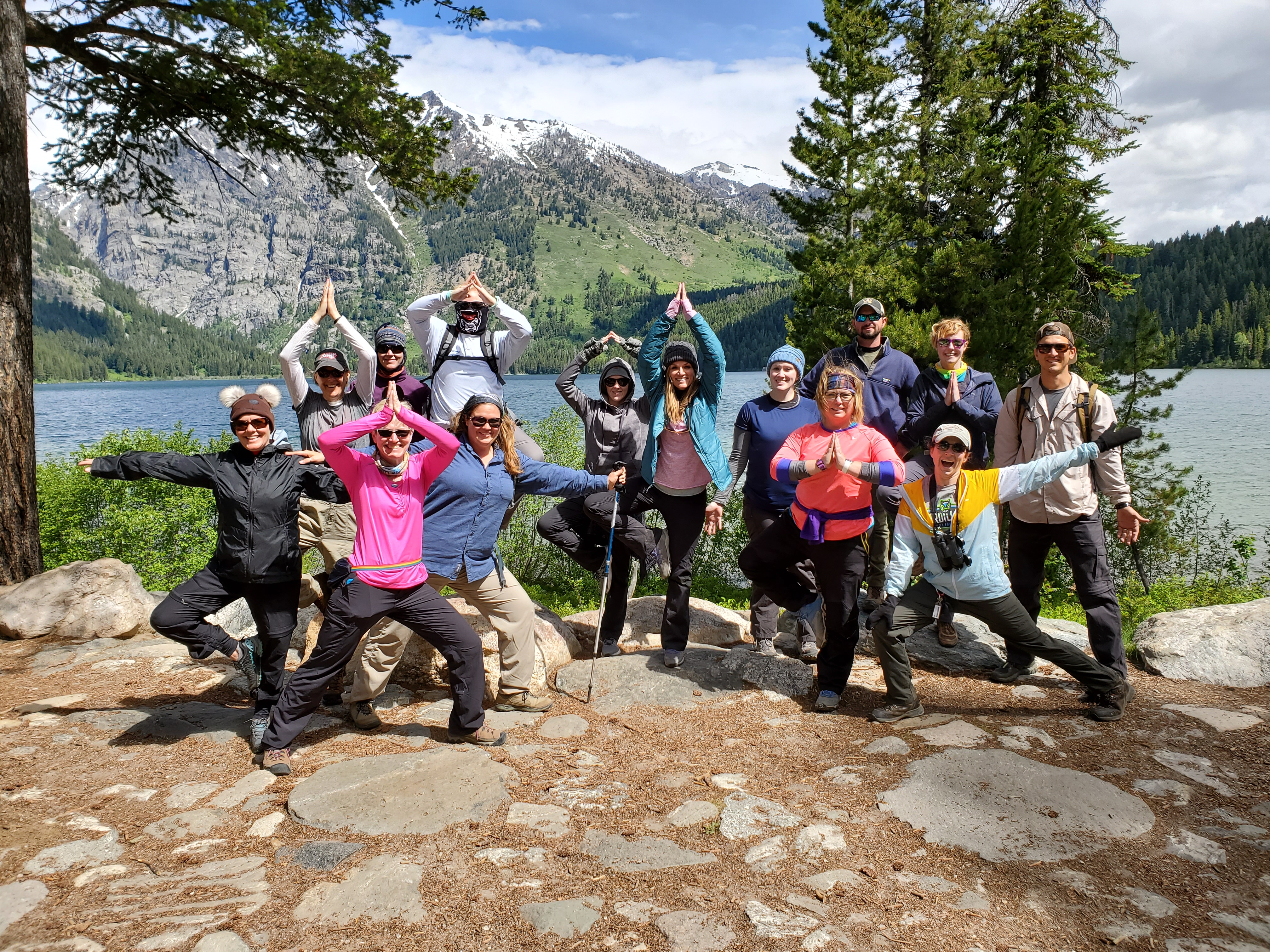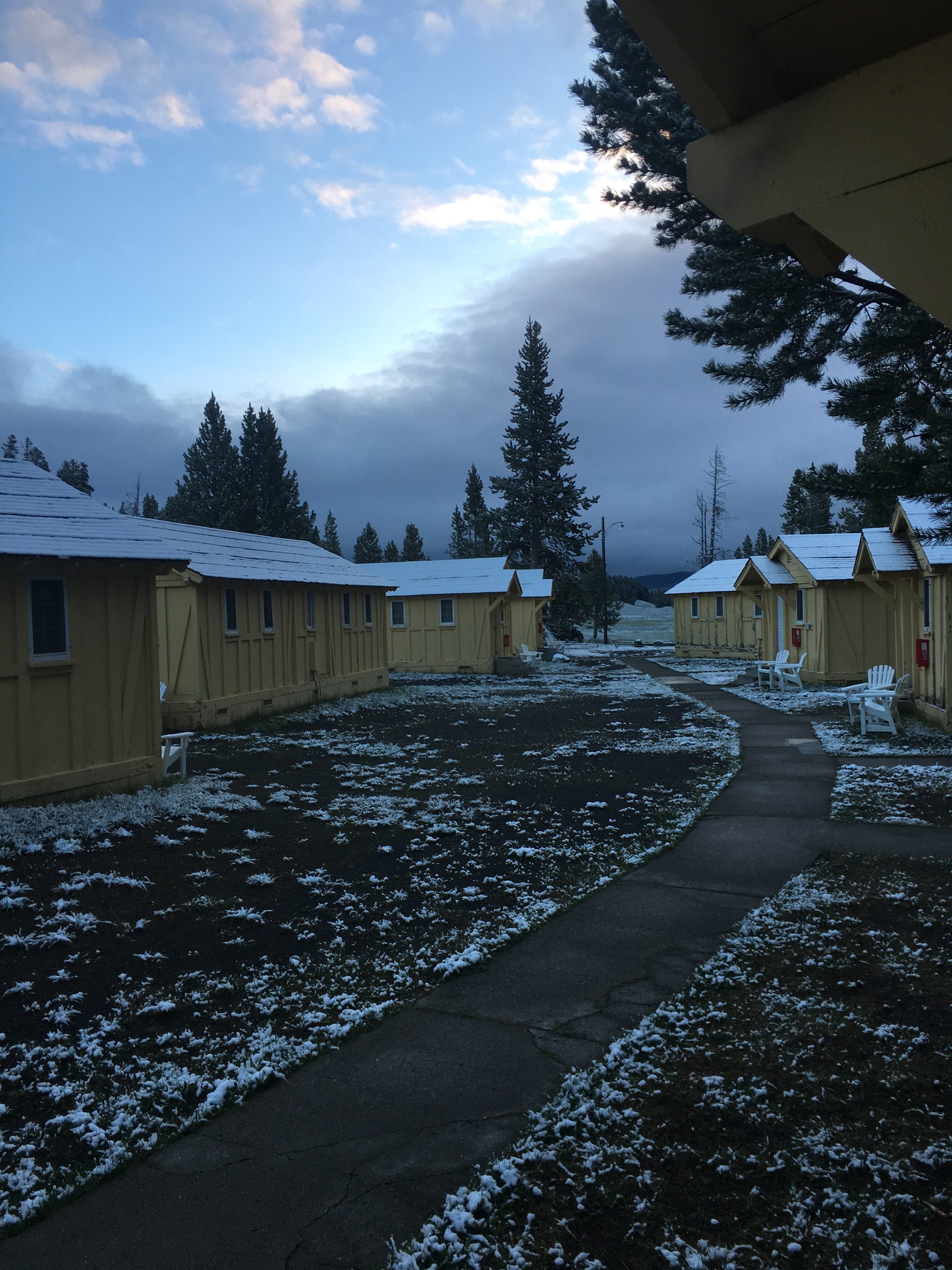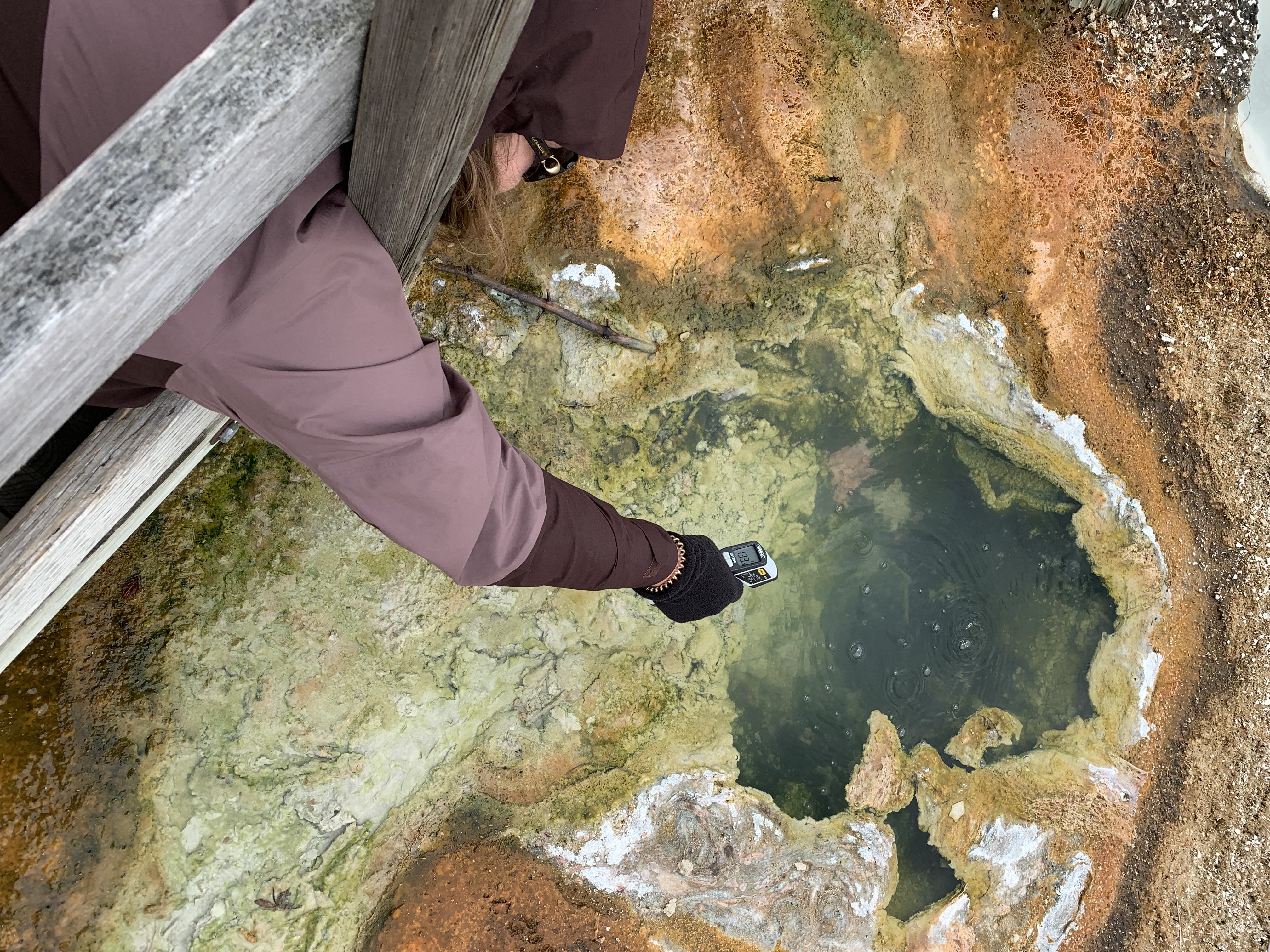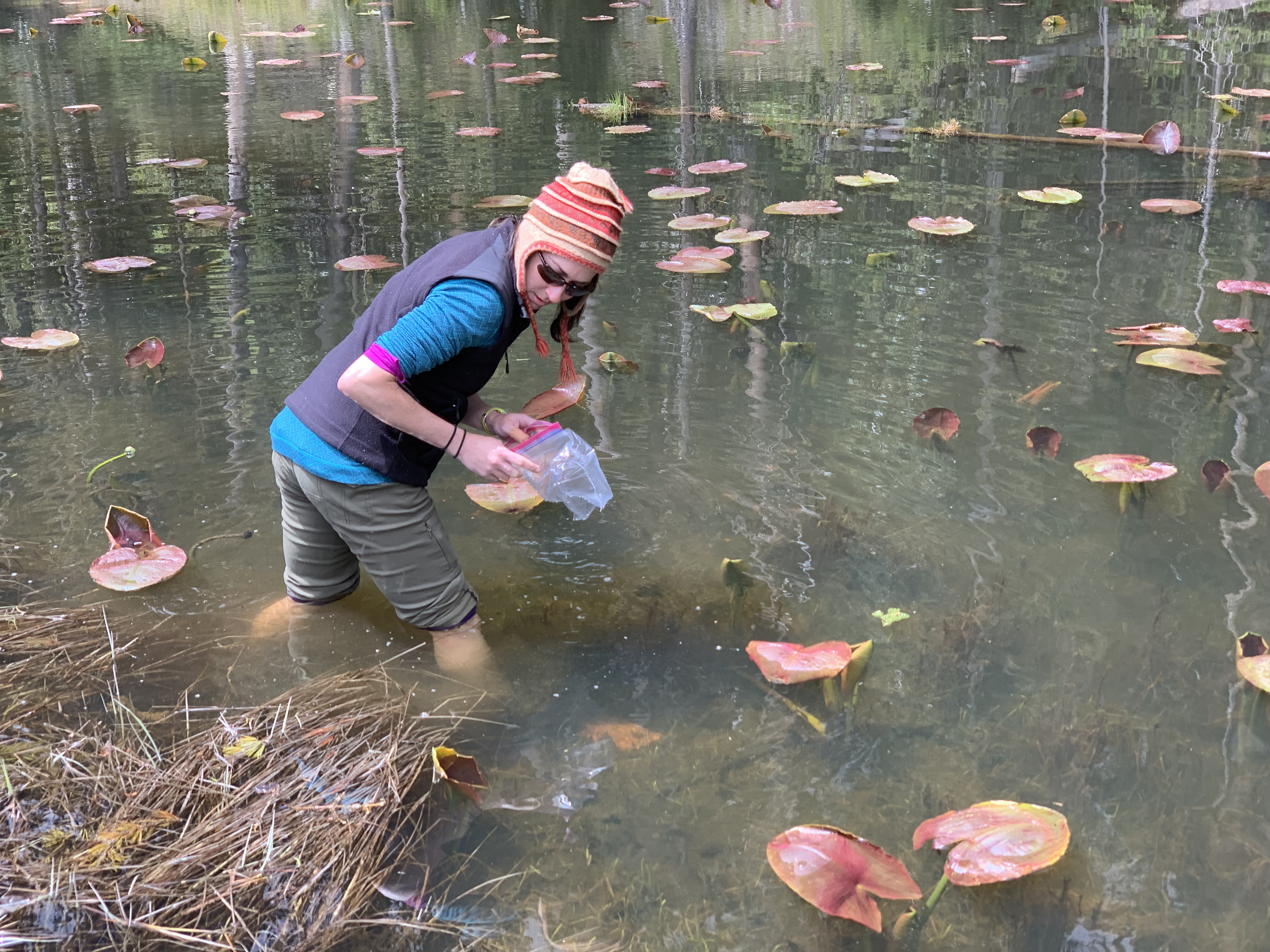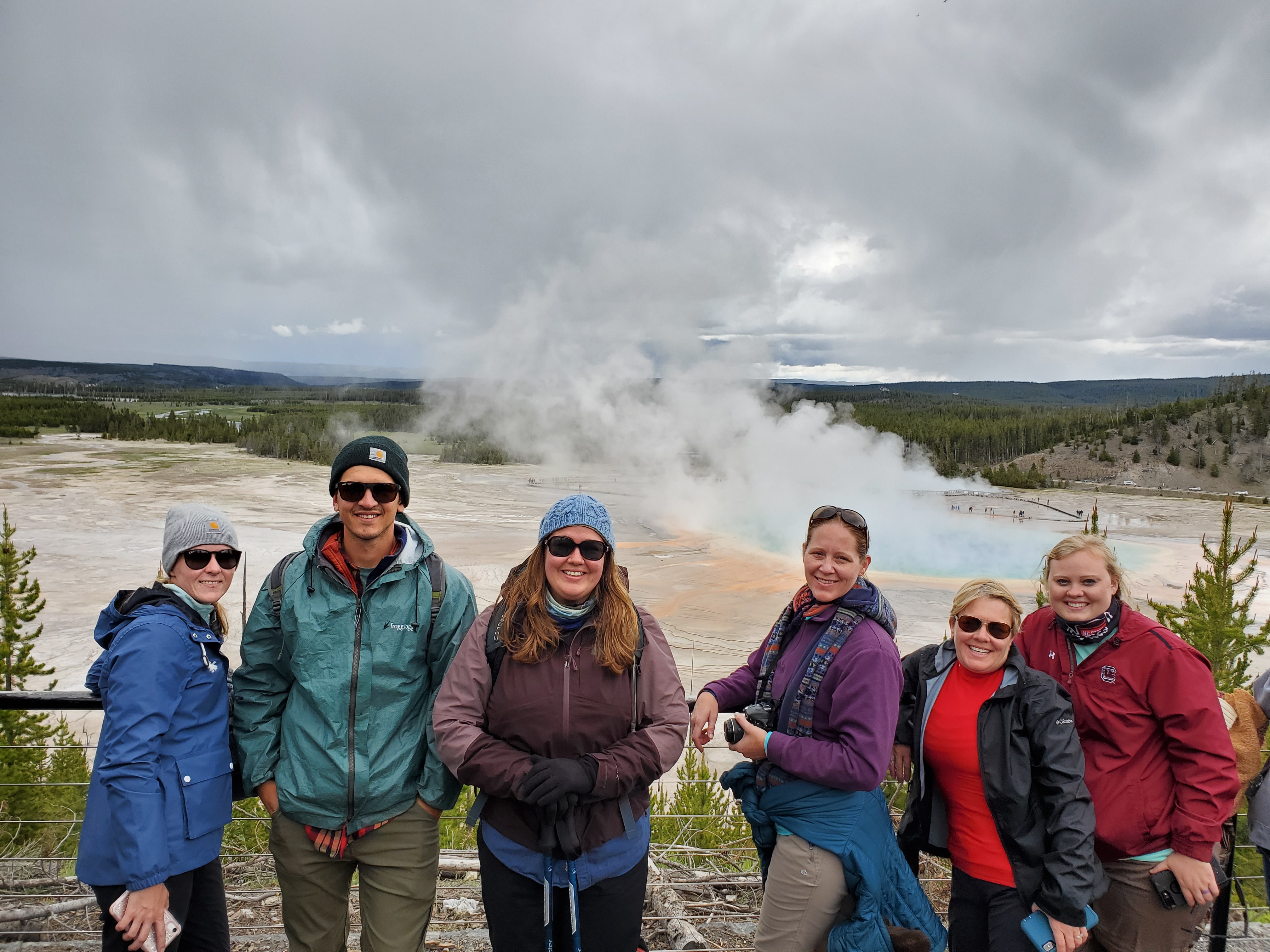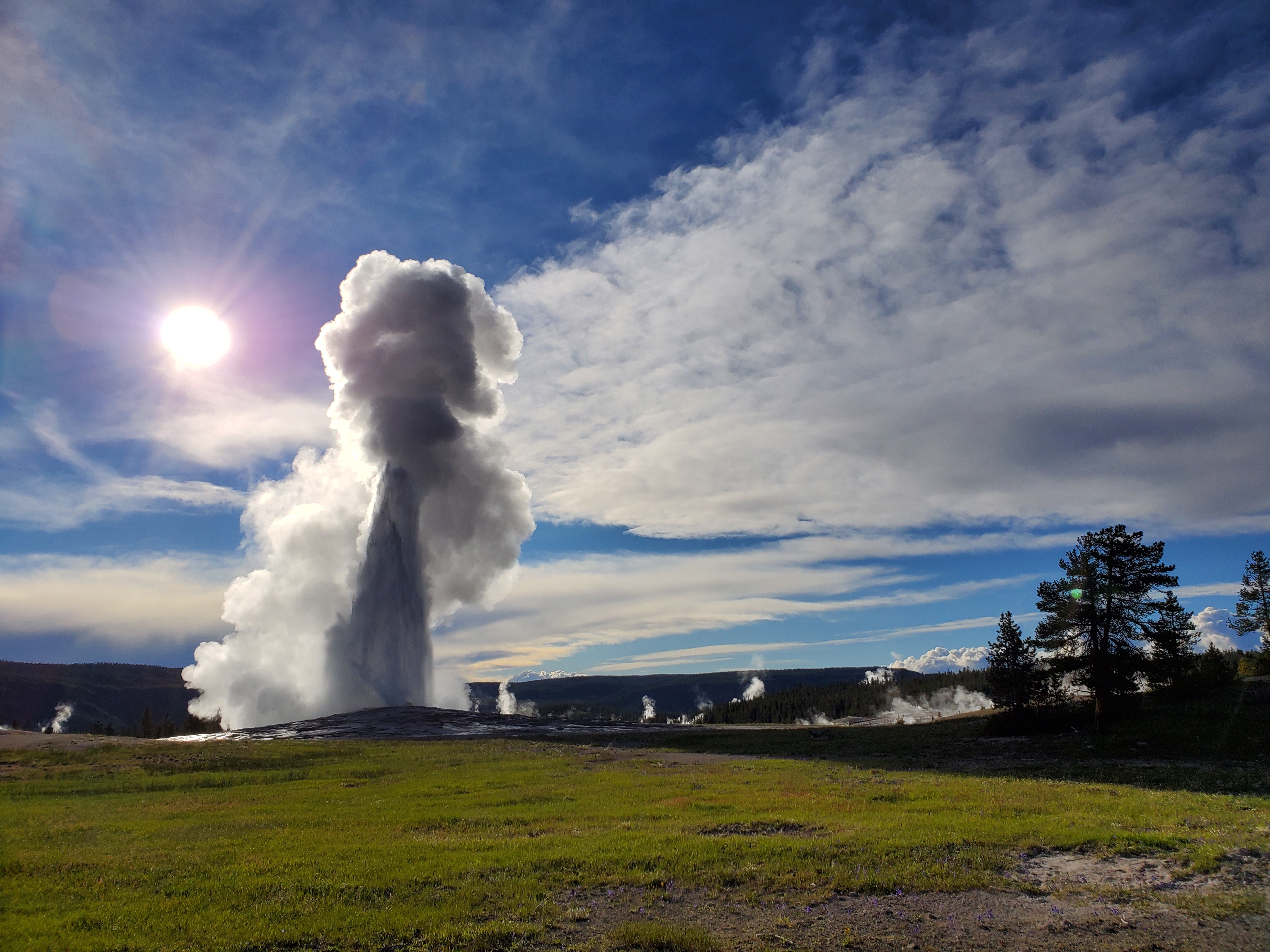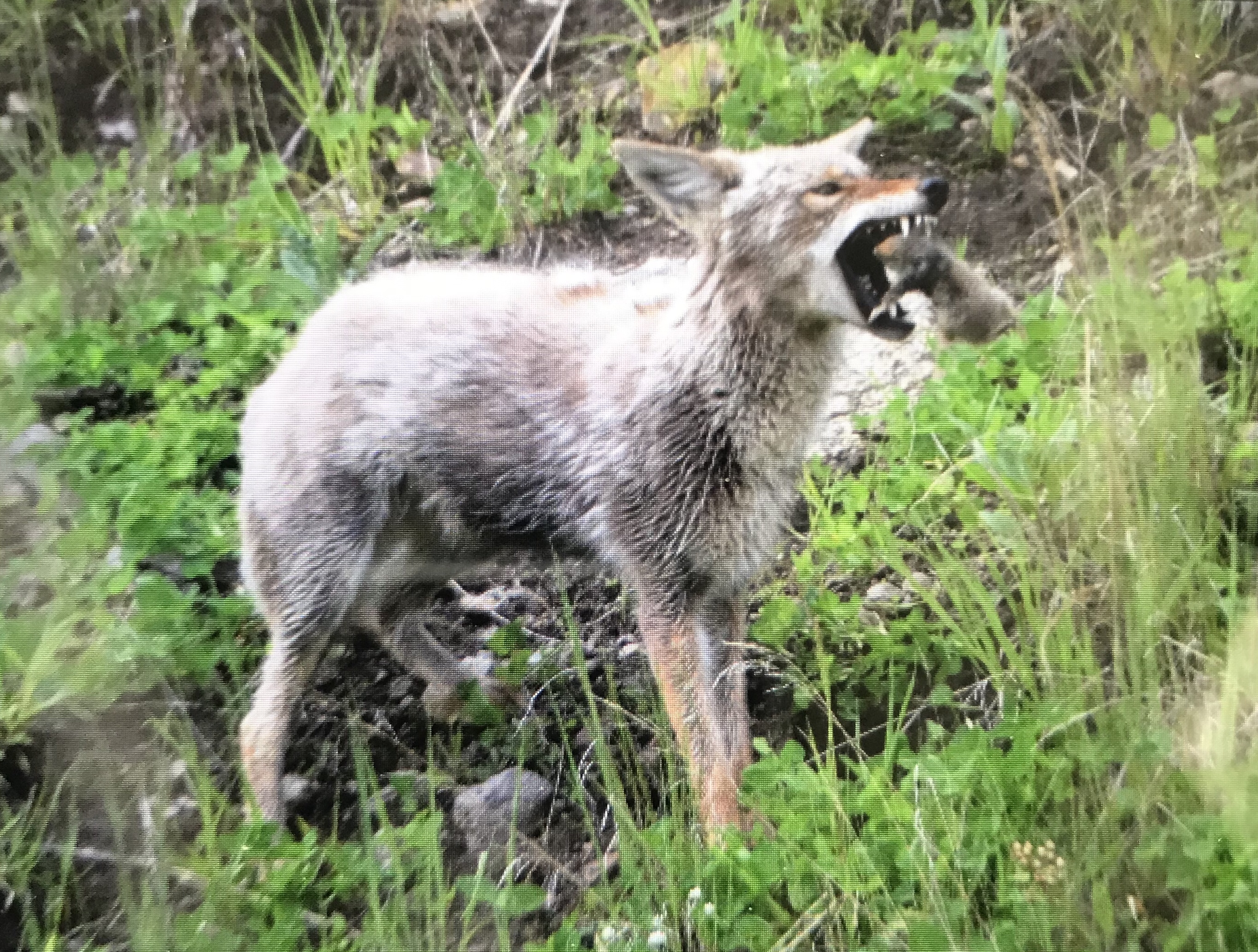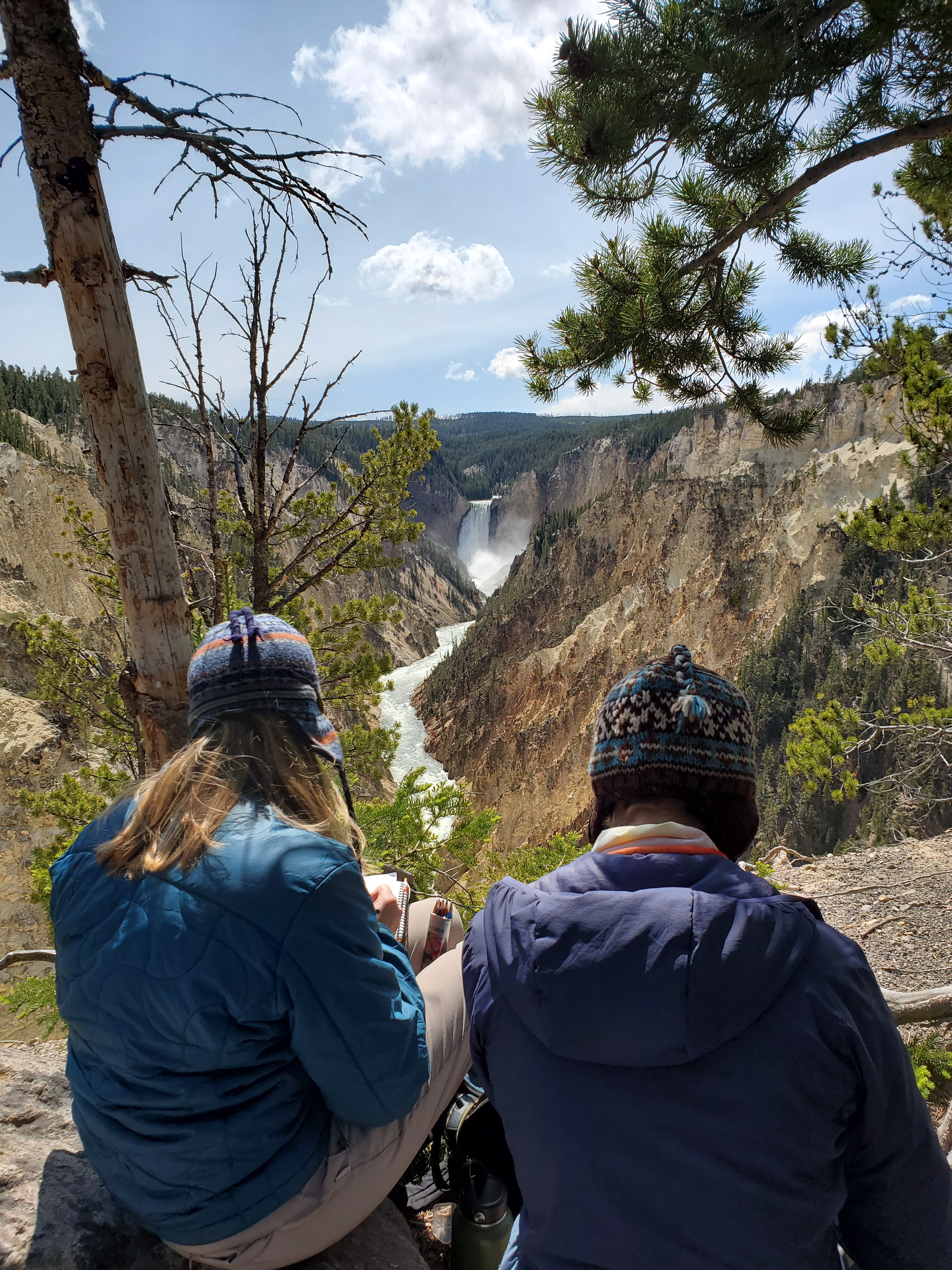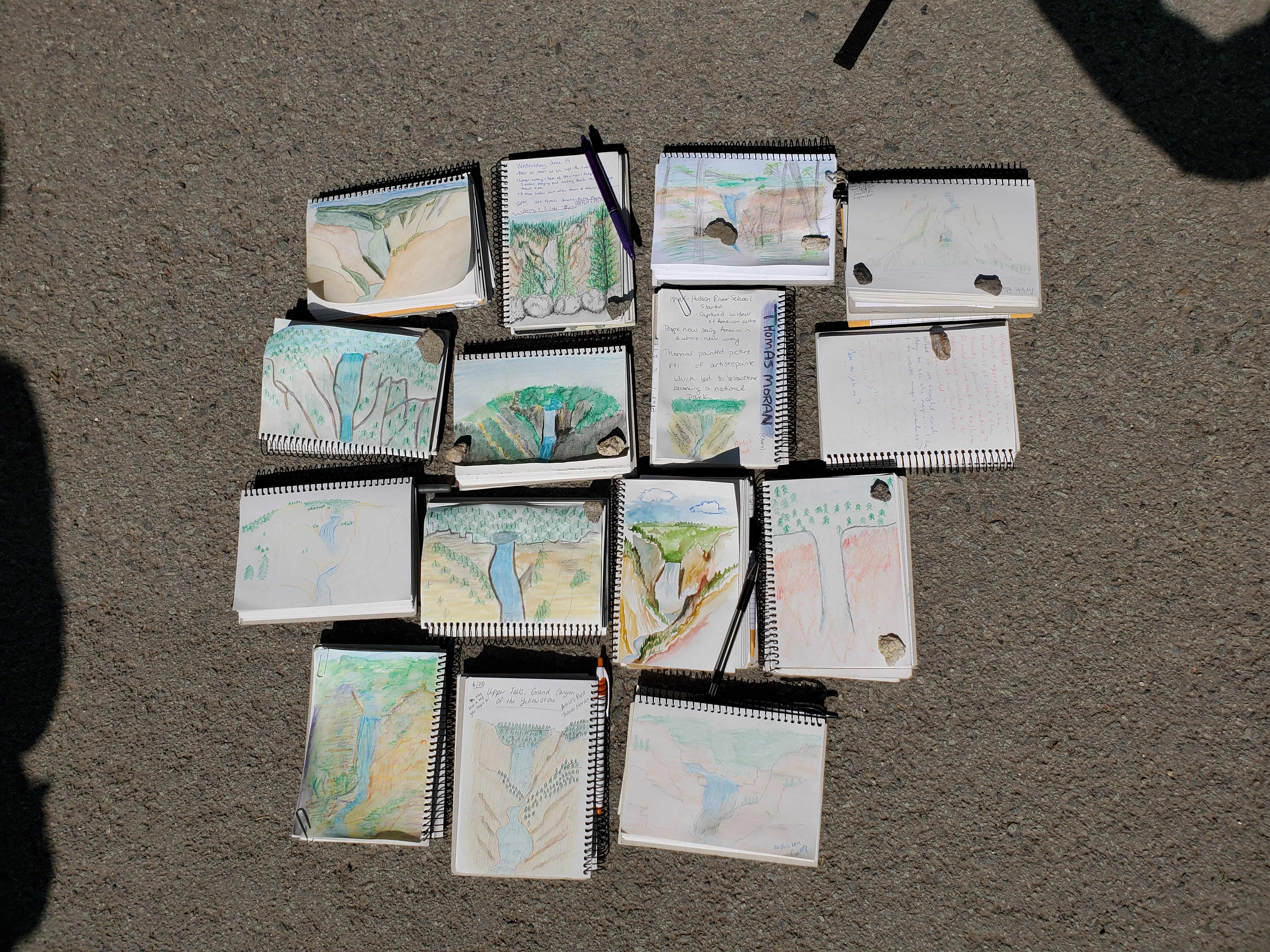“The music of the Amazon”
July 12, 2019 - 6 Comments
The goal of life is to make your heartbeat match the beat of the universe, to match your nature with Nature.” -Joseph Campbell
The rhythm and harmony of life on, and near, the river was the theme of our experiences today. We began just after dawn with bird watching, turning our heads to the calls and drawing our binoculars to our eyes to follow the rapid movement from tree to tree. Following breakfast, we took two boats to Lake Caceres, where we saw three-toed sloths, giant water lilies, and jacanas (nick-named Jesus Christ birds because they can seemingly walk on water!). Our guides knew each bend in the river, and shared stories of where they would fish or climb trees. We were astounded at how a slight shadow, sixty-feet in the air, could be so adeptly identified as a three-toed, female sloth – but our guides were in tune with life on and around the river.
In the afternoon, we participated in the cultural and artisanal fair with the Yagua people. We were to treated a sampling of Peruvian music by the band Los Mosandaros. Styles ranged from Cumbia – heard in many parts of Latin America – to Pan Deja (with a pan flute) – a style of music enjoyed in Amazon communities during their Carnival celebrations. We also enjoyed local cuisine derived from sugar cane, yucca, and peanuts, and learned the proper way to eat Miel de Cana on sugar cane (sugar cane molasses). Using the natural materials around them, artisans fashioned pots, thatched roofs, rope, and baskets. Dyes were created from various plants, and we swatched our cheeks, arms, and journals with the green dye made from young pijuayo palm leaves and indigo blue from the mishki panga (ginger fruit) husk. The paint made us look especially fierce as we shot darts from the blow gun.
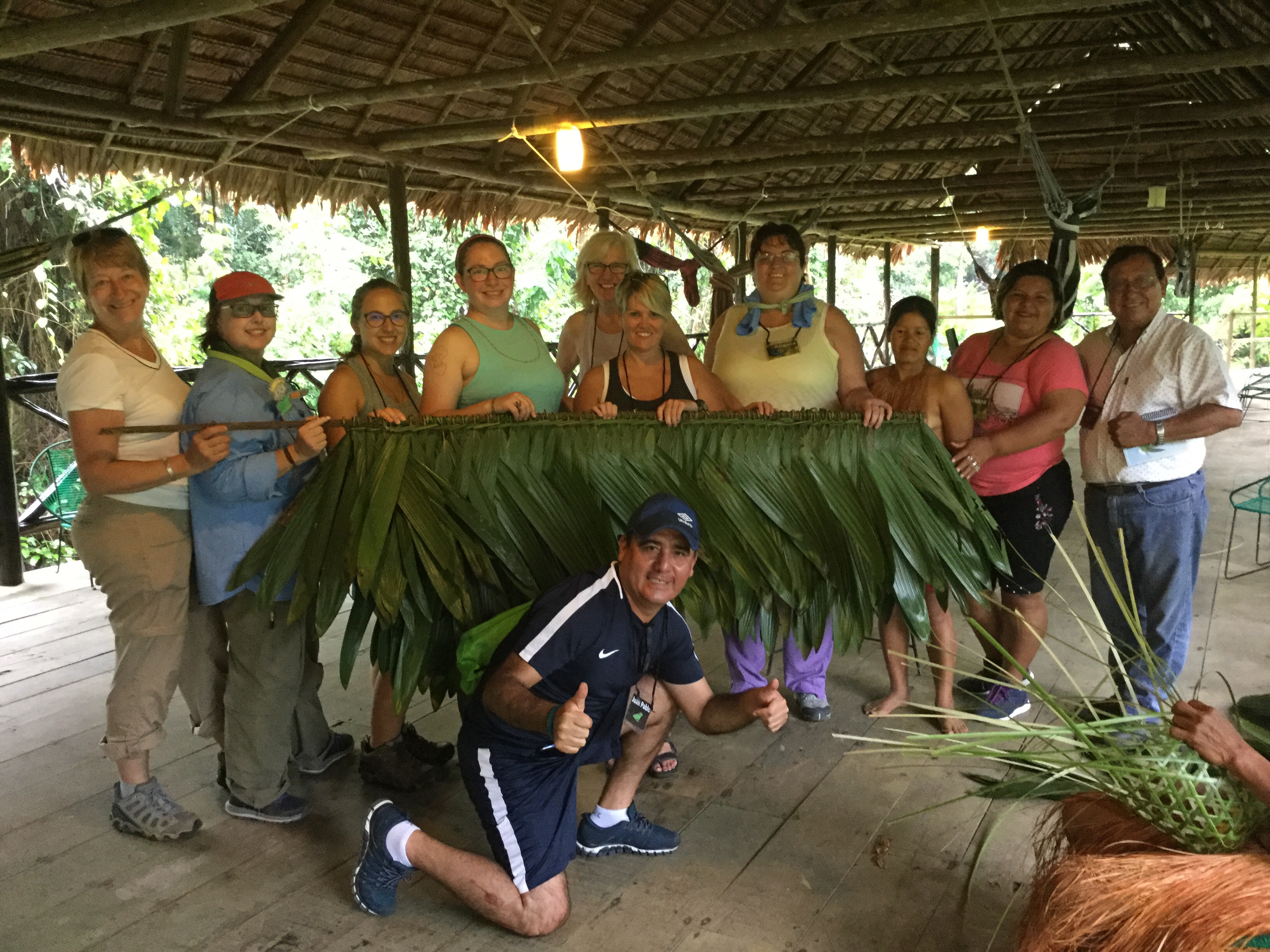
A completed thatch panel we made for the roof- such skill is involved in this process!
In the evening, we floated back out onto the Yanamono river and at first heard, then spotted, a number of frogs, including an incredibly large and exceedingly loud Smoky Jungle frog – they can grow to be as long as 7 inches (not including the legs)! As our boats floated into the grass we turned off all lights and were silent – revealing the symphony of frogs that seemed to be coming from every direction. As we made our way out to the mighty Amazon, fish jumped around our boats, and the clouds parted, revealing the night sky. We identified several constellations, including the “teapot” constellation, which inspired us to sing two renditions of the song “I’m a Little Teapot” in both English and Spanish – and yes, we did the motions.
The heartbeat of the Amazon is strong and steady, and we are incredibly privileged to be a small part of its music during this trip.
Ps. ALL of us got our bags back! It’s a miracle!!! Many thanks to the tireless efforts of the Explorama staff for making that possible!!!
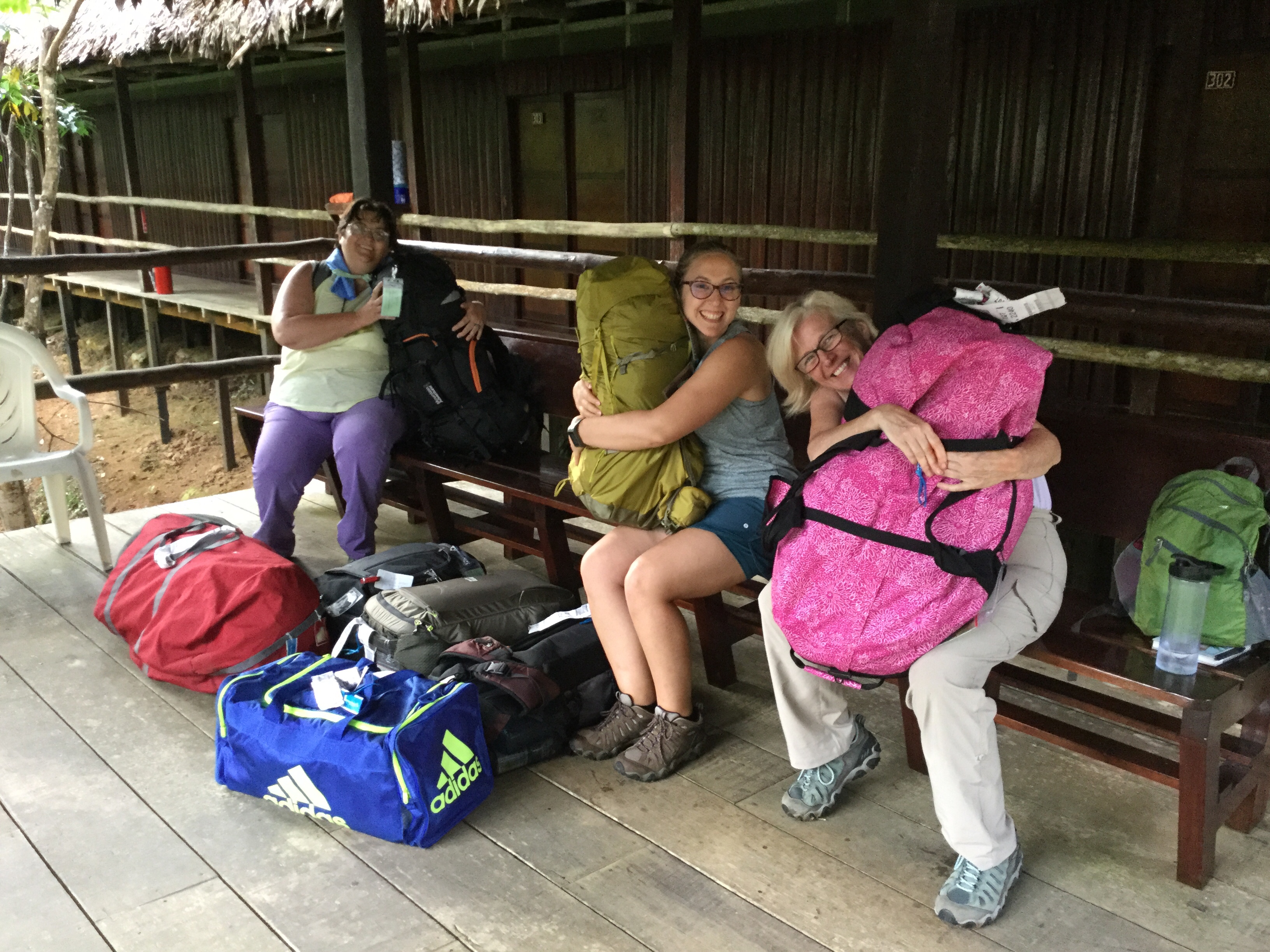
Our luggage has arrived and we are so excited!

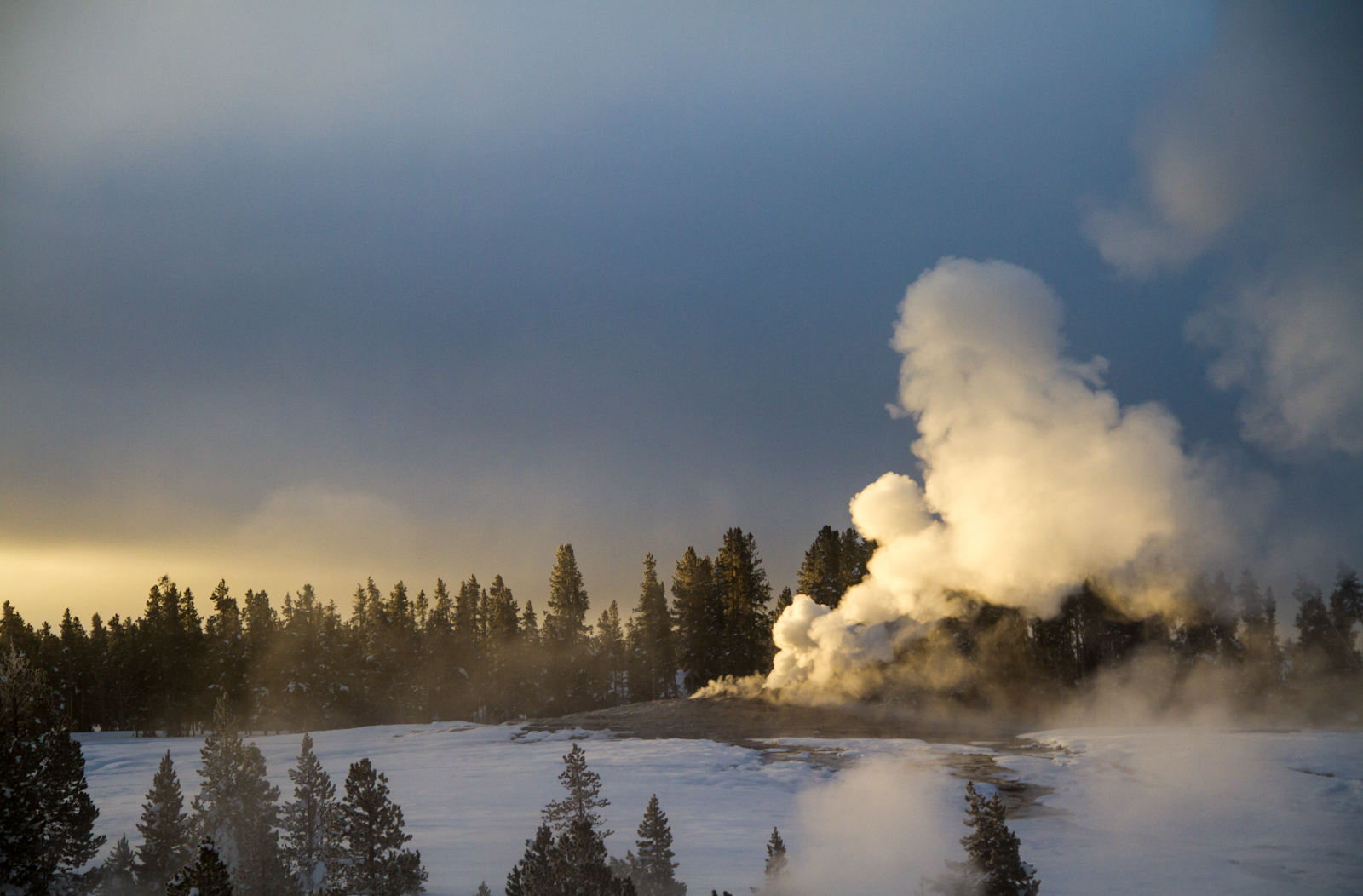

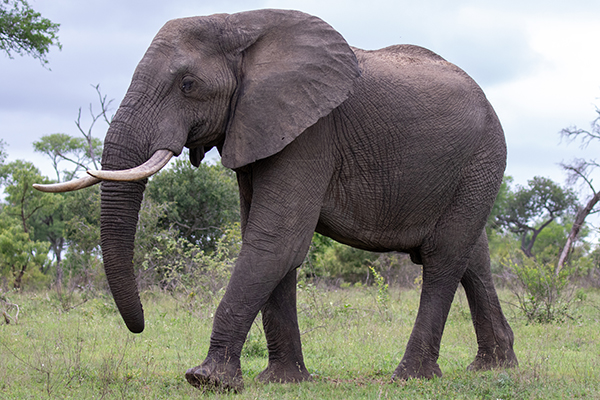
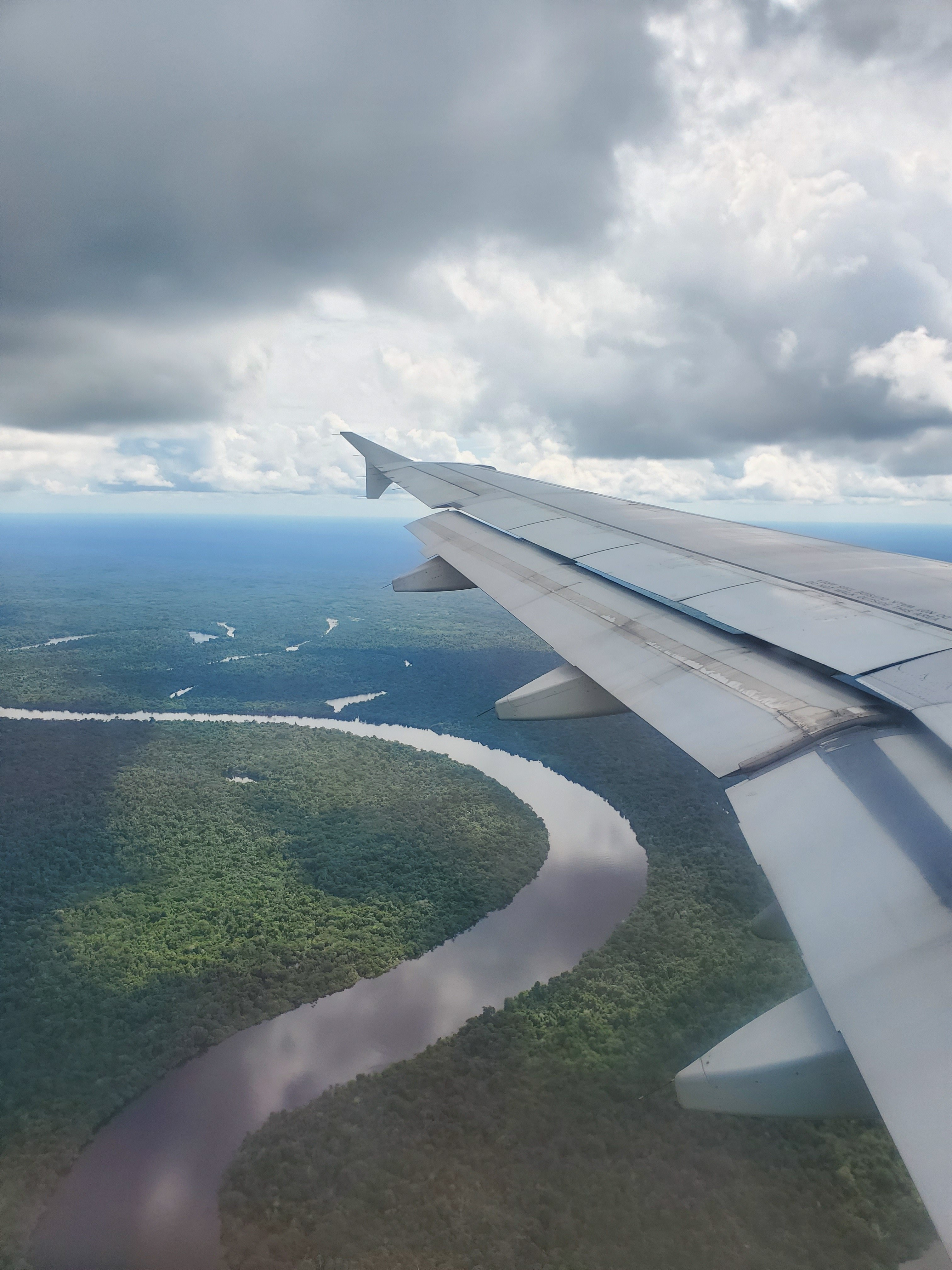 After being picked up in Iquitos, we drove through the Belen Market. Roaming Peruvian Hairless Dogs and Black Vultures perched on rooftops were a common sight in the market. We also saw medicinal plants, spices, fresh and grilled meats – it was an experience to see and smell.From there, we met up with our group of Peruvian educators and had lunch on the boat as we cruised down three rivers; the Rio de Itaya , Rio de Amazon, and Yanamono River. Along the way, we spotted countless rainbows, birds and small communities along the river. Upon arriving, it took no longer than a minute for the resident squirrel monkeys to captivate our team as they jumped from tree to tree.
After being picked up in Iquitos, we drove through the Belen Market. Roaming Peruvian Hairless Dogs and Black Vultures perched on rooftops were a common sight in the market. We also saw medicinal plants, spices, fresh and grilled meats – it was an experience to see and smell.From there, we met up with our group of Peruvian educators and had lunch on the boat as we cruised down three rivers; the Rio de Itaya , Rio de Amazon, and Yanamono River. Along the way, we spotted countless rainbows, birds and small communities along the river. Upon arriving, it took no longer than a minute for the resident squirrel monkeys to captivate our team as they jumped from tree to tree.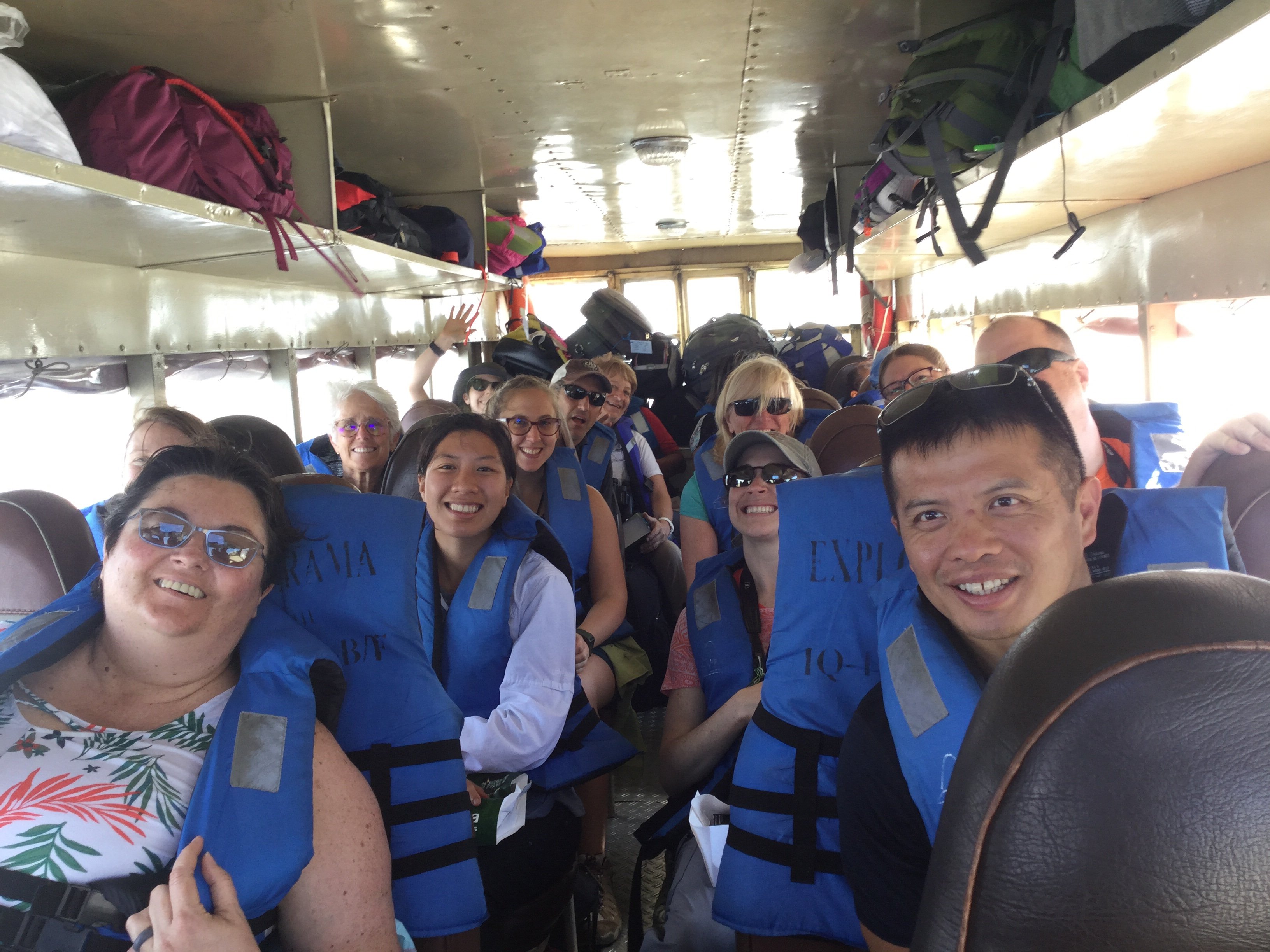
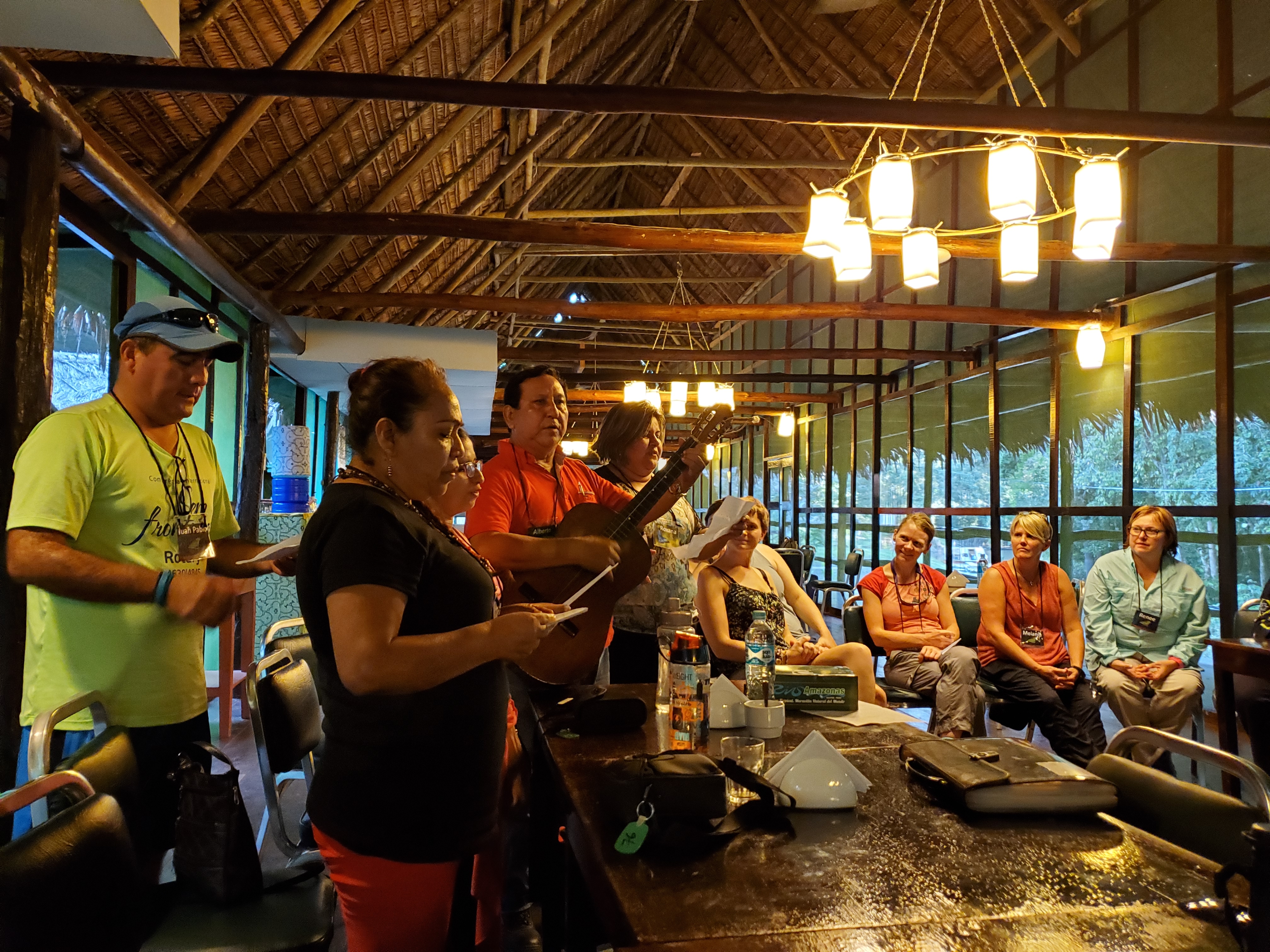 We are sharing a meal together before embarking on our first real Amazon adventure tonight: a night-time boat ride to find creatures and see new stars. Buenas noches y hasta manana!
We are sharing a meal together before embarking on our first real Amazon adventure tonight: a night-time boat ride to find creatures and see new stars. Buenas noches y hasta manana!